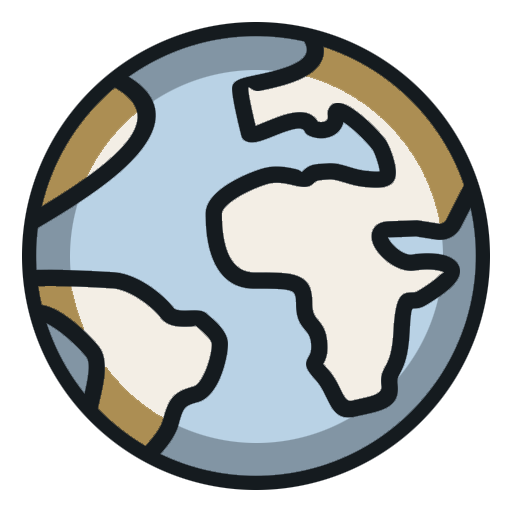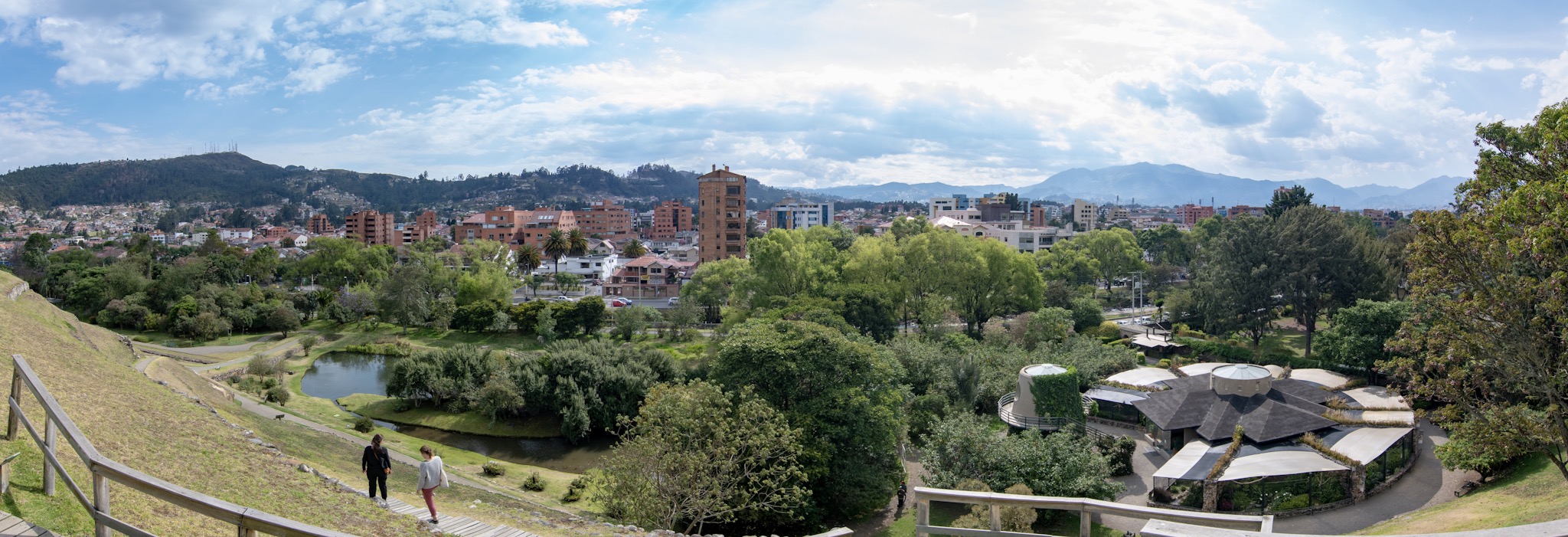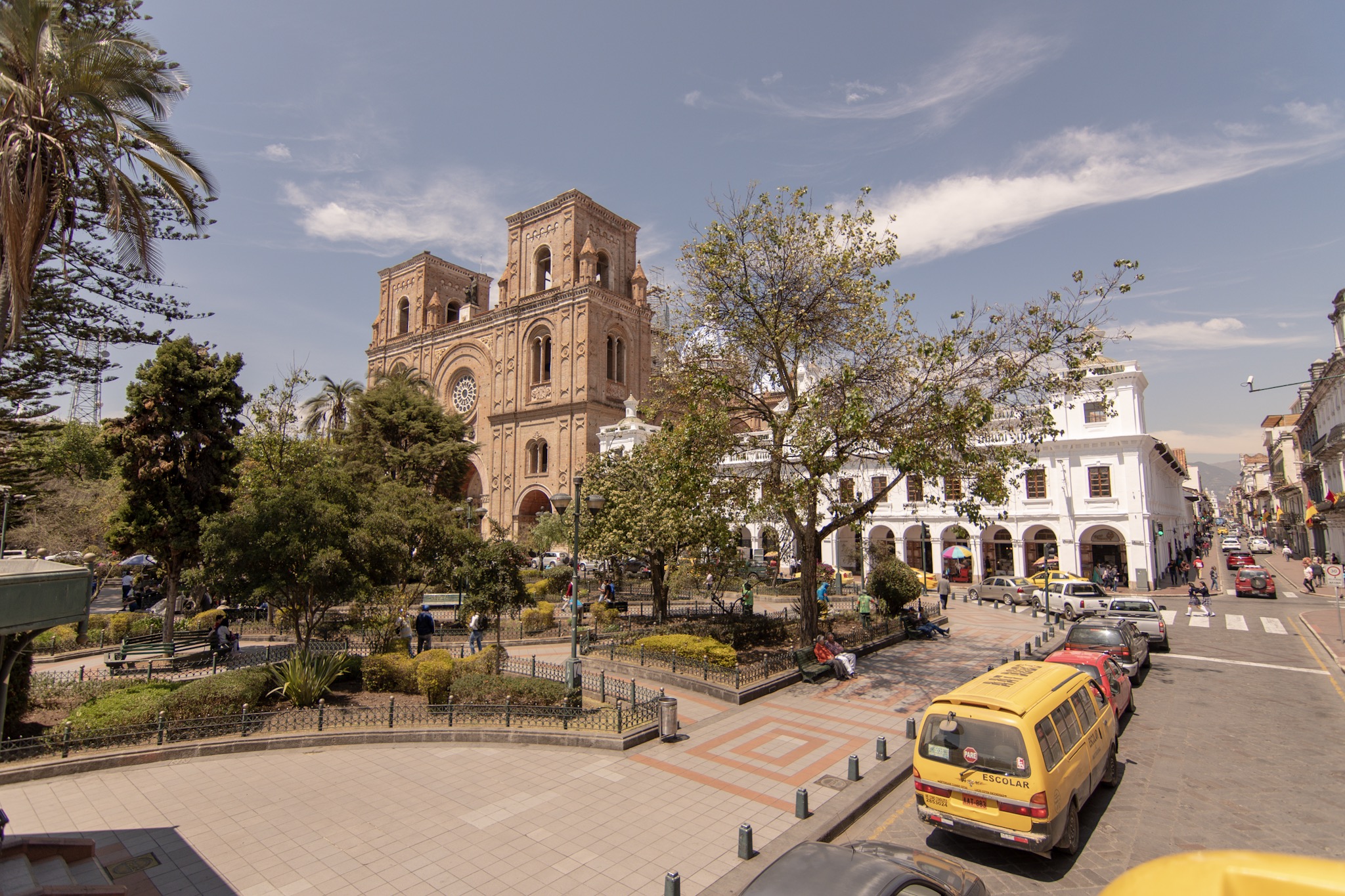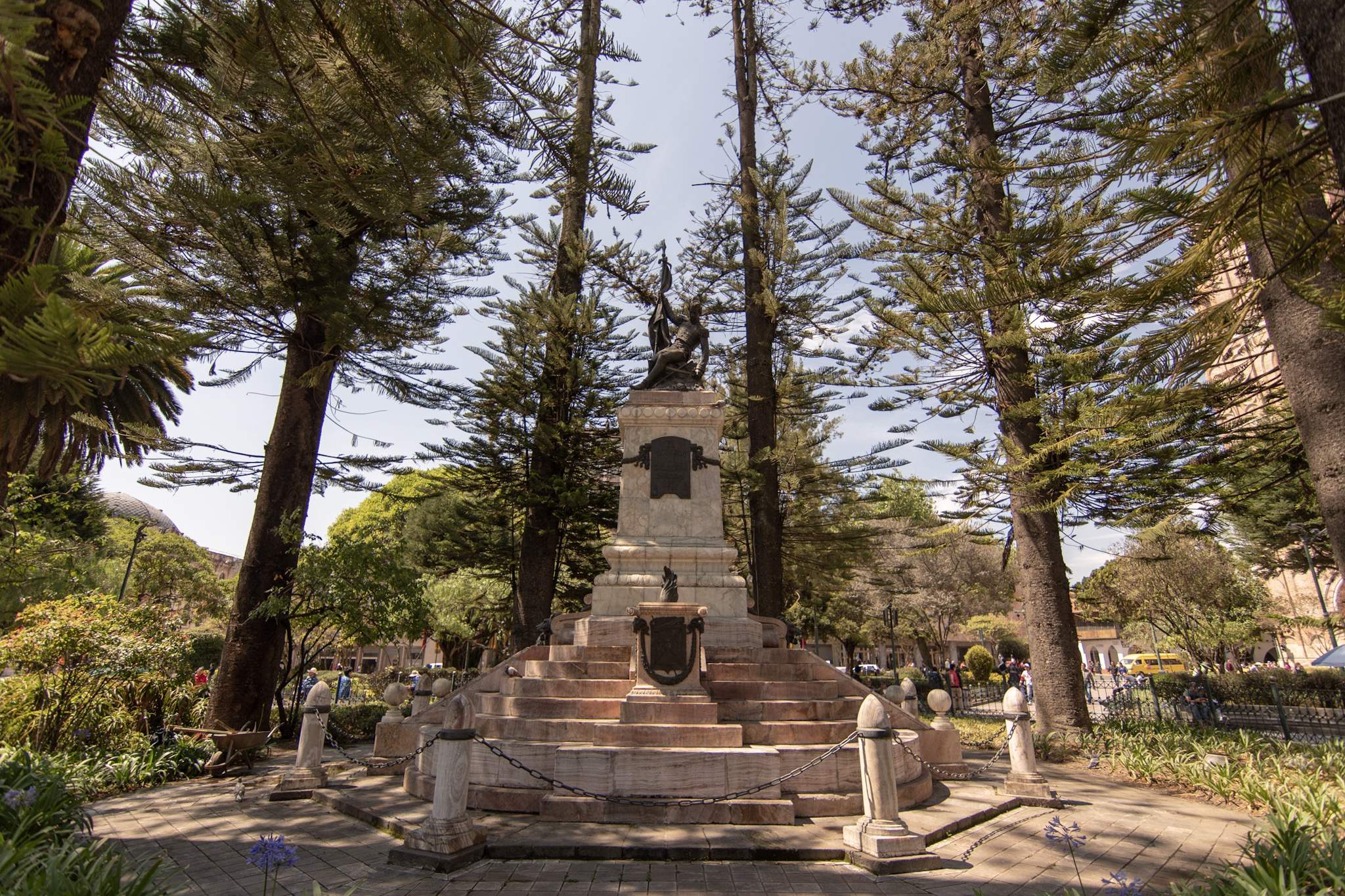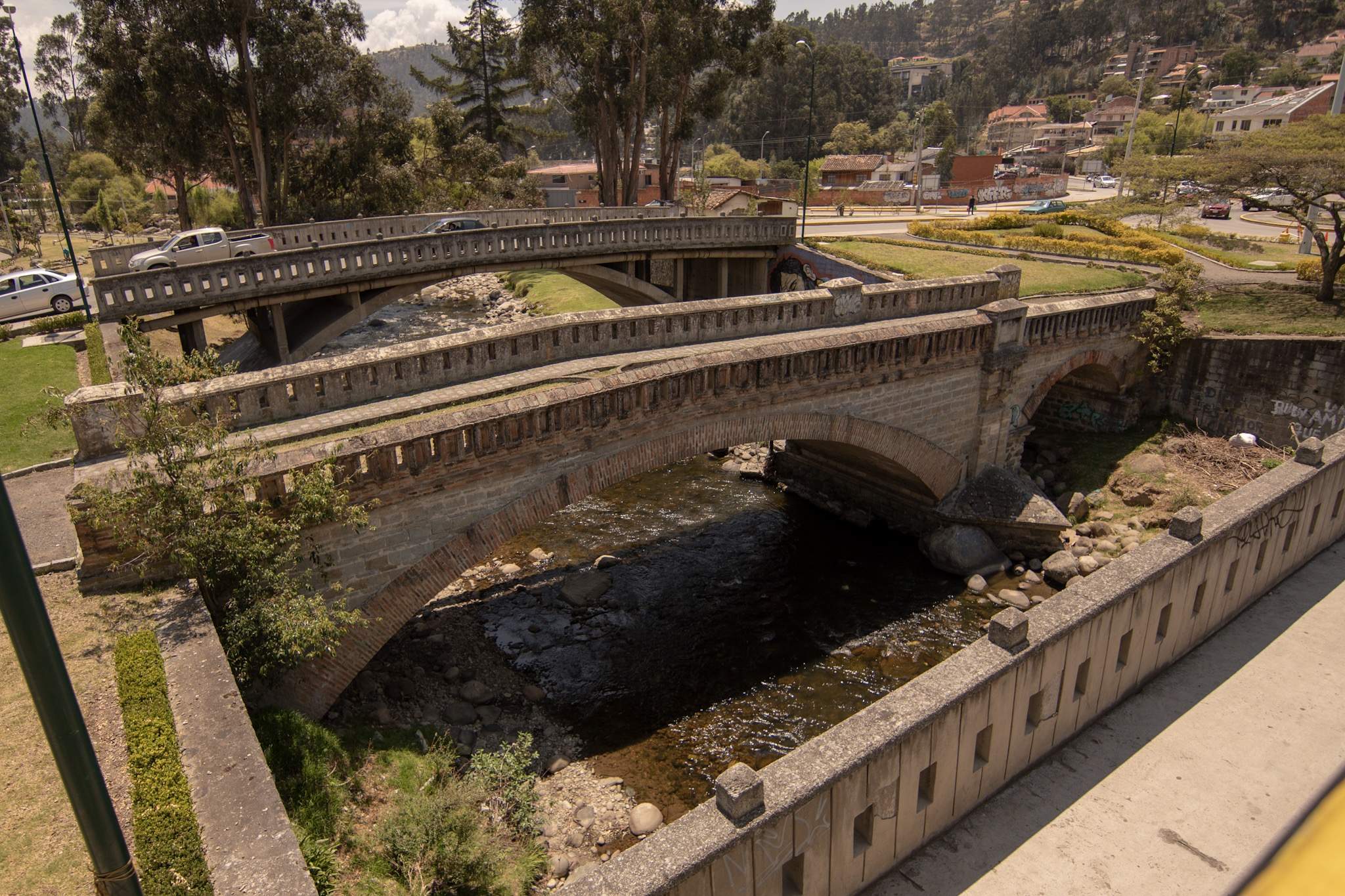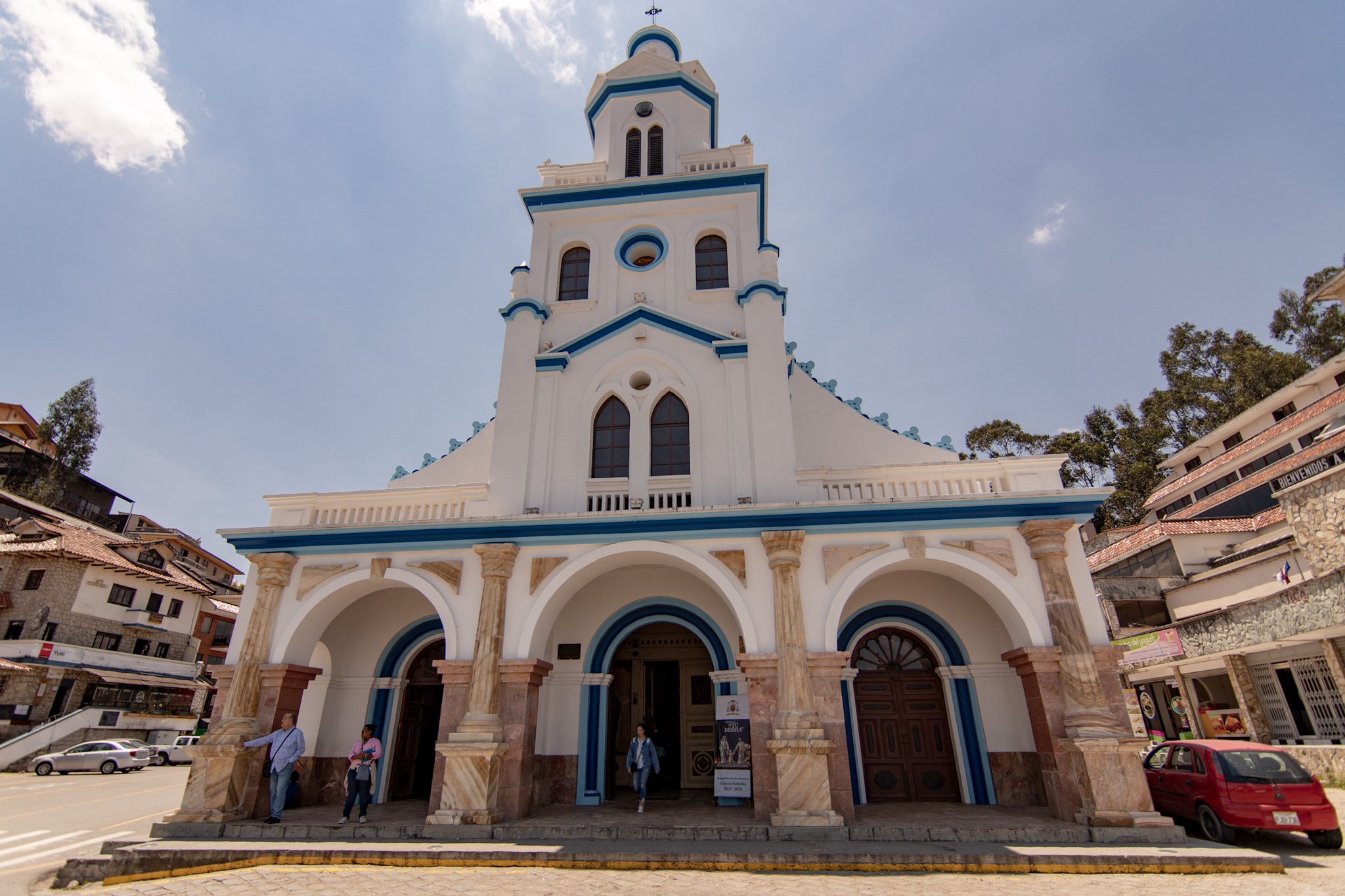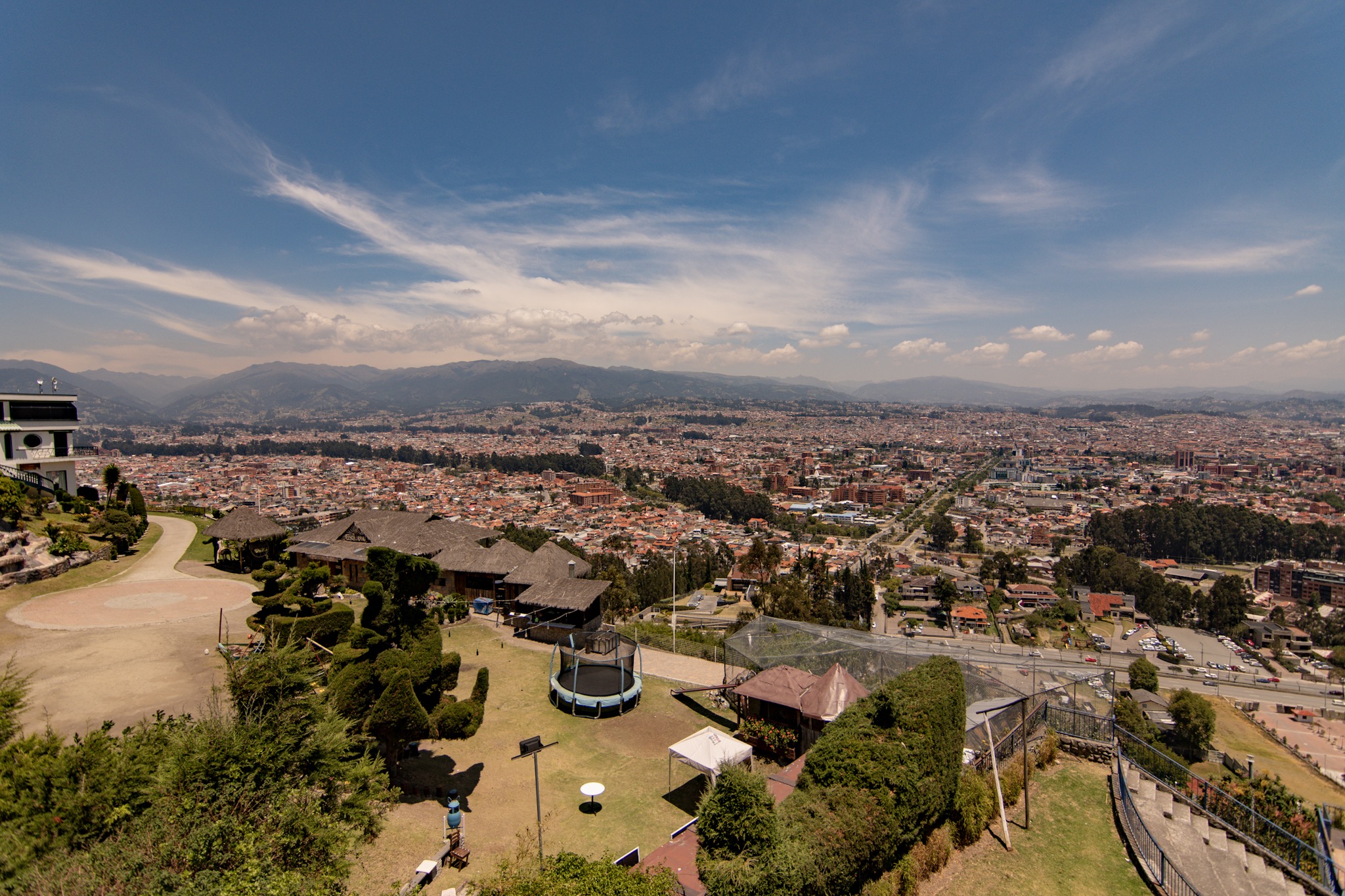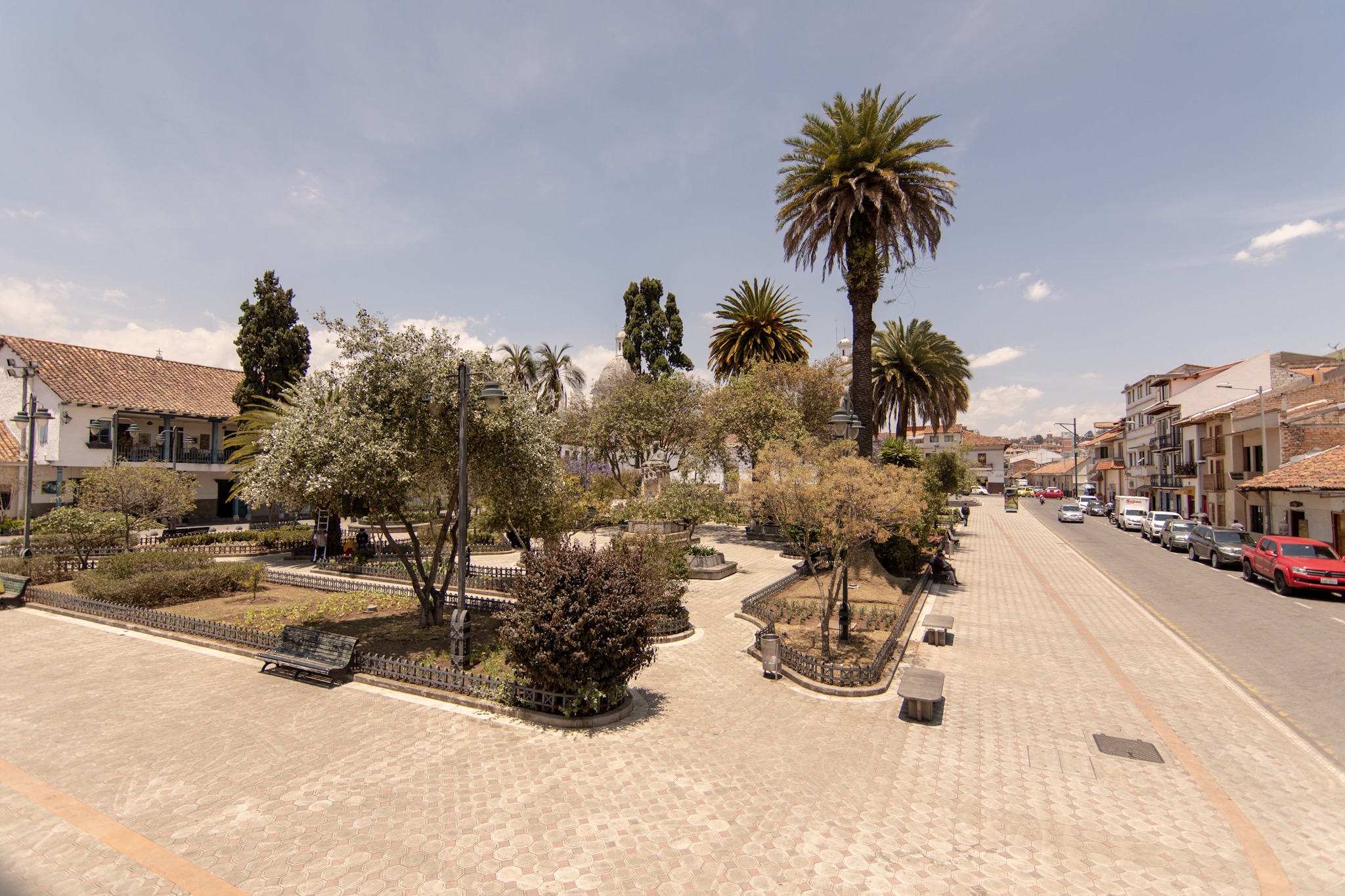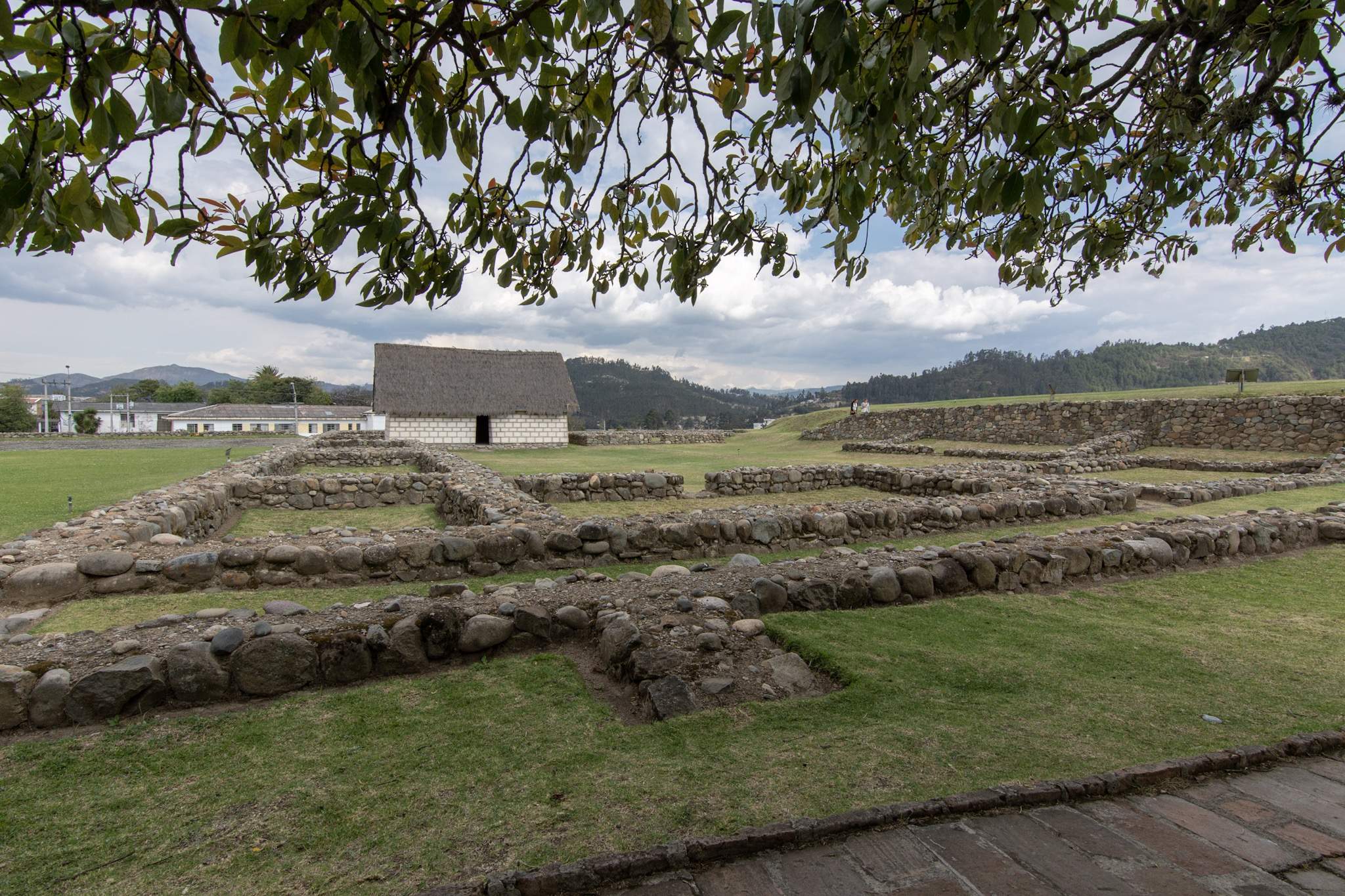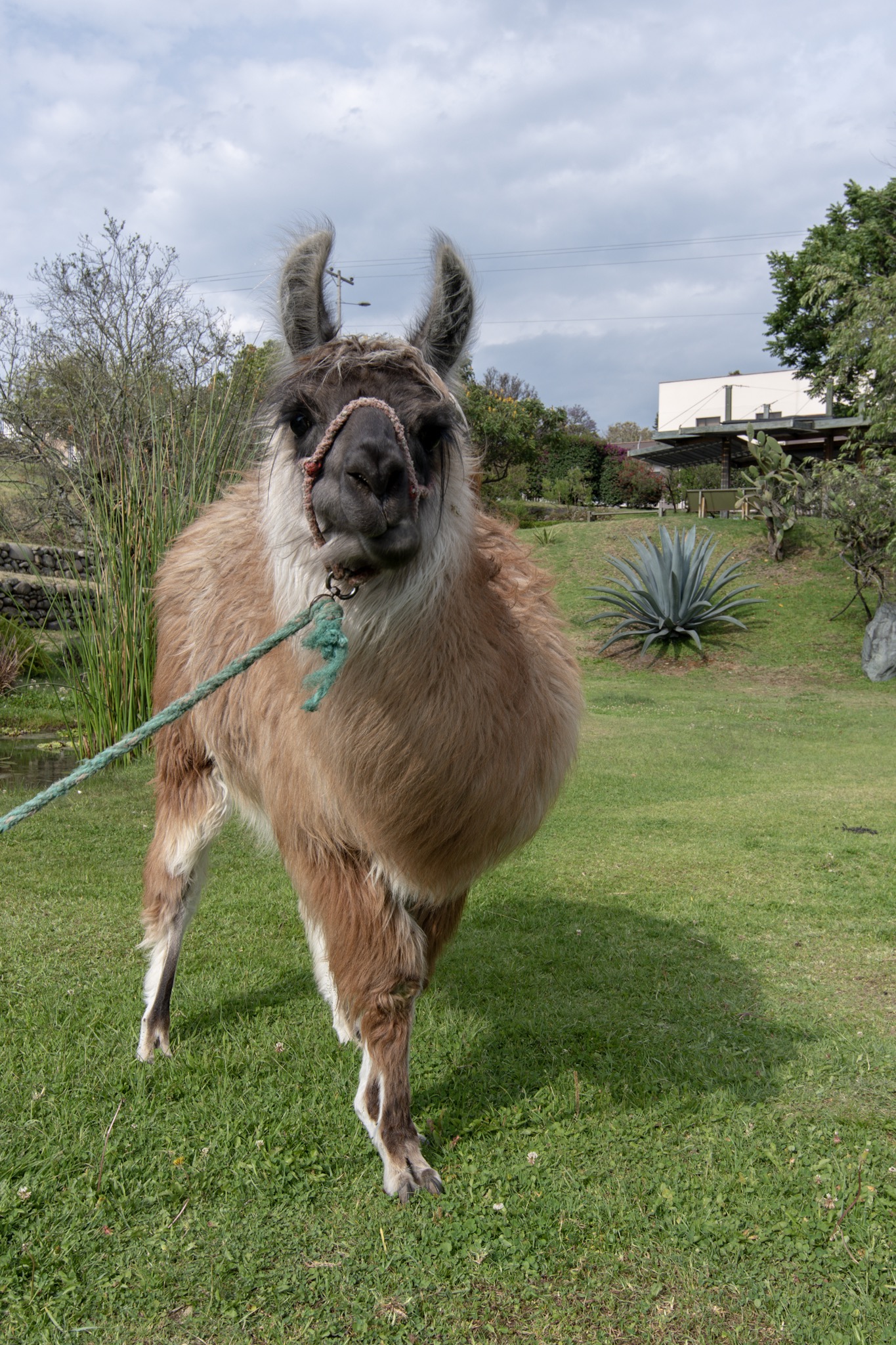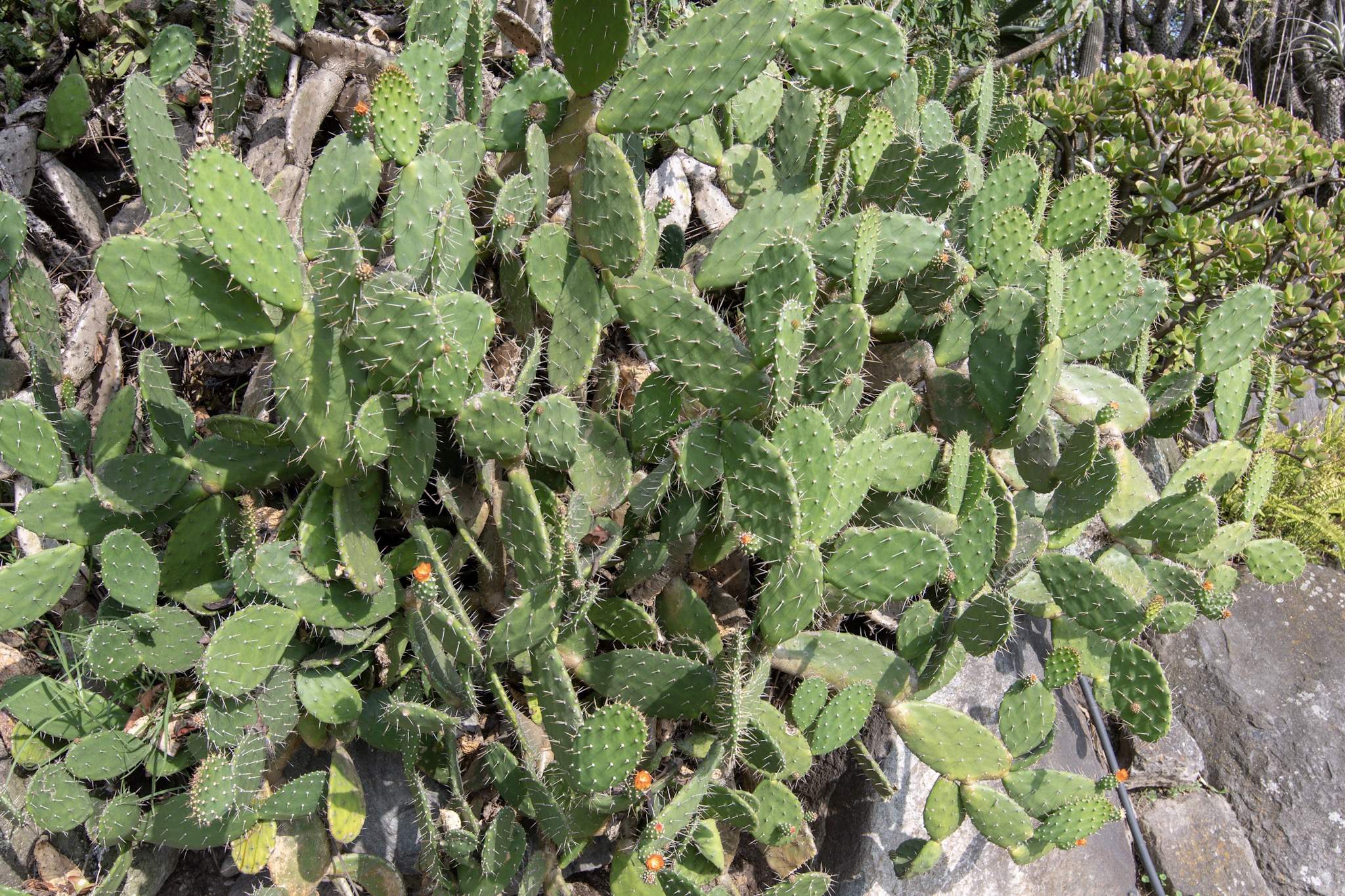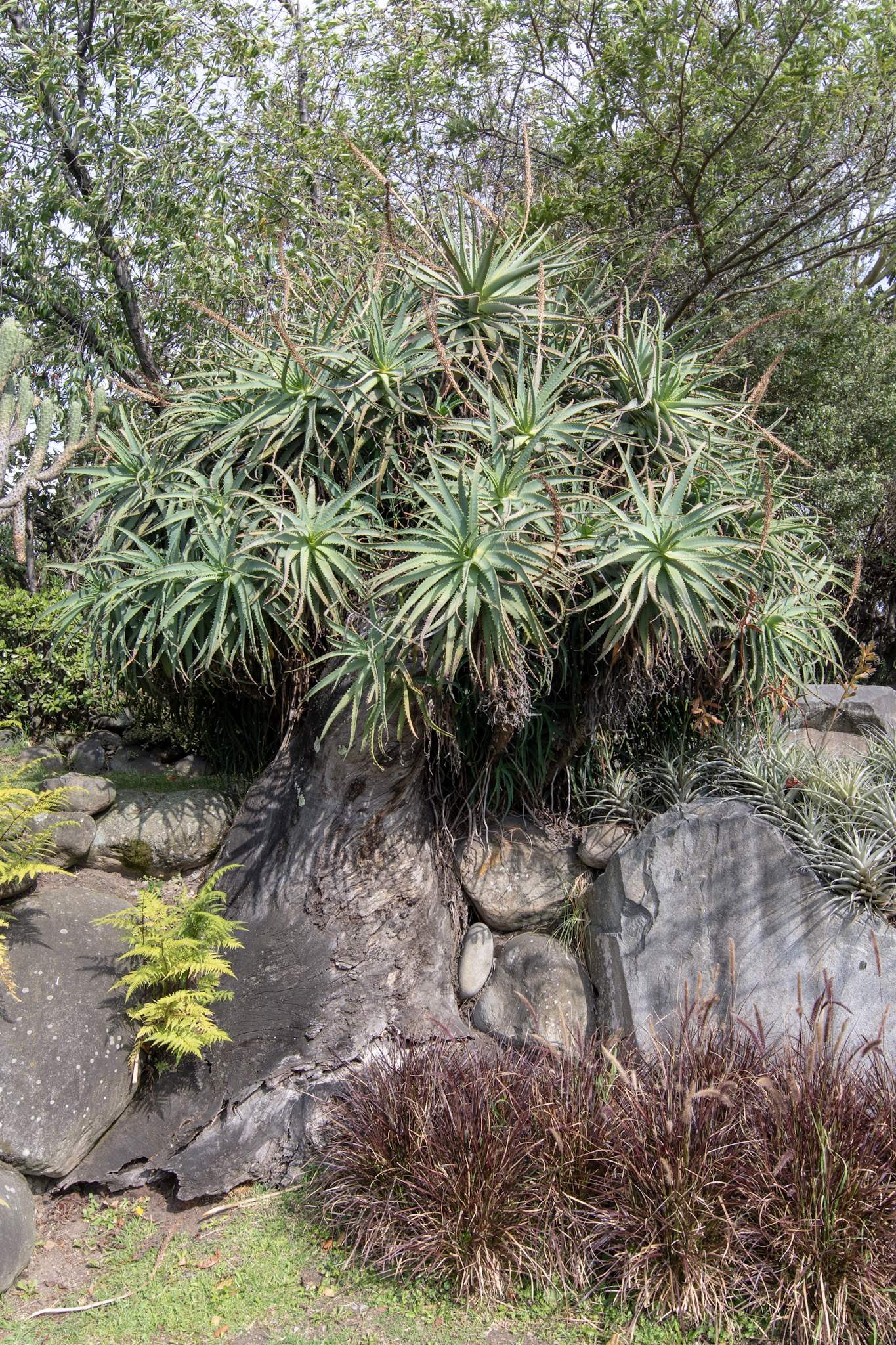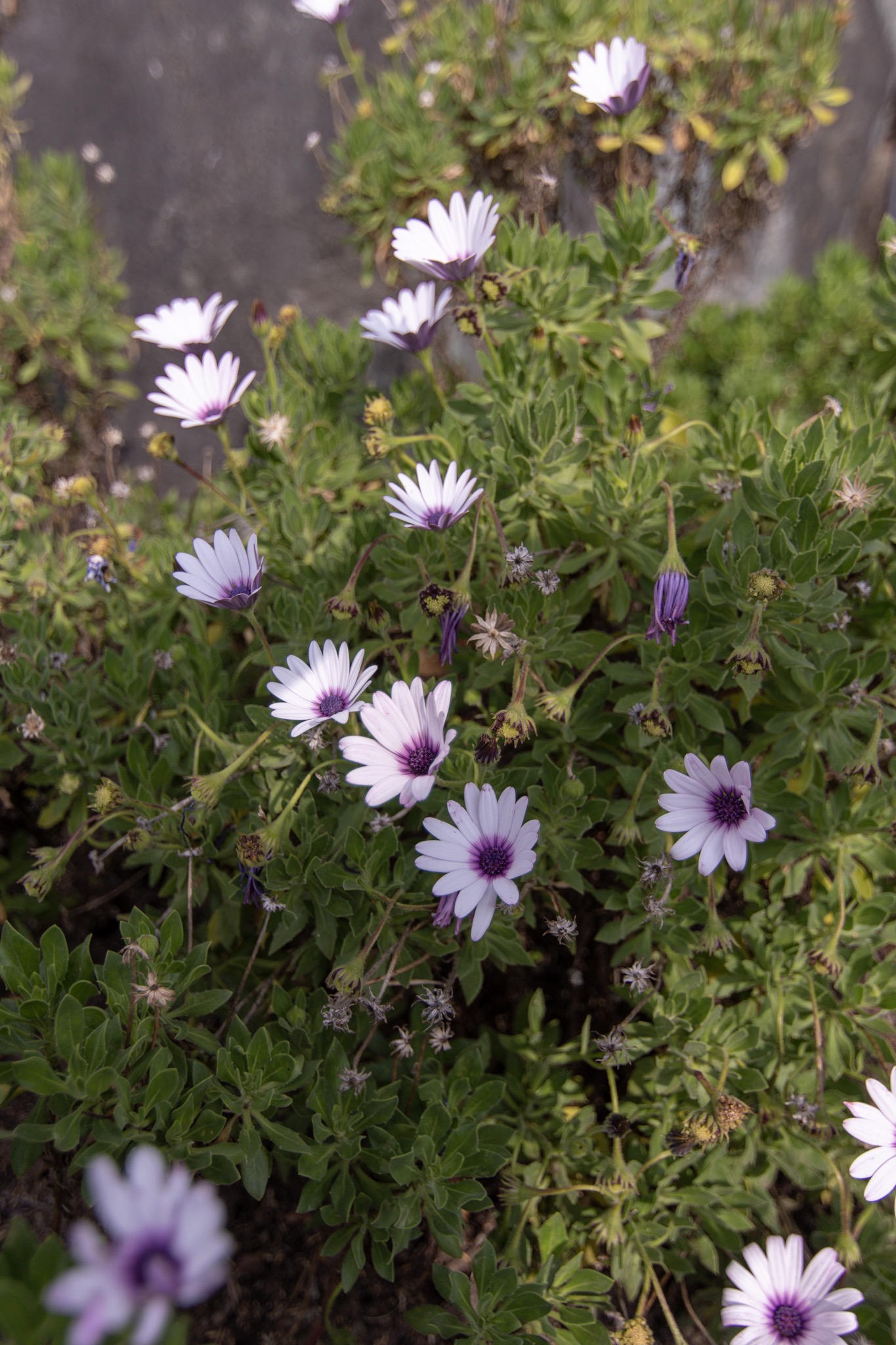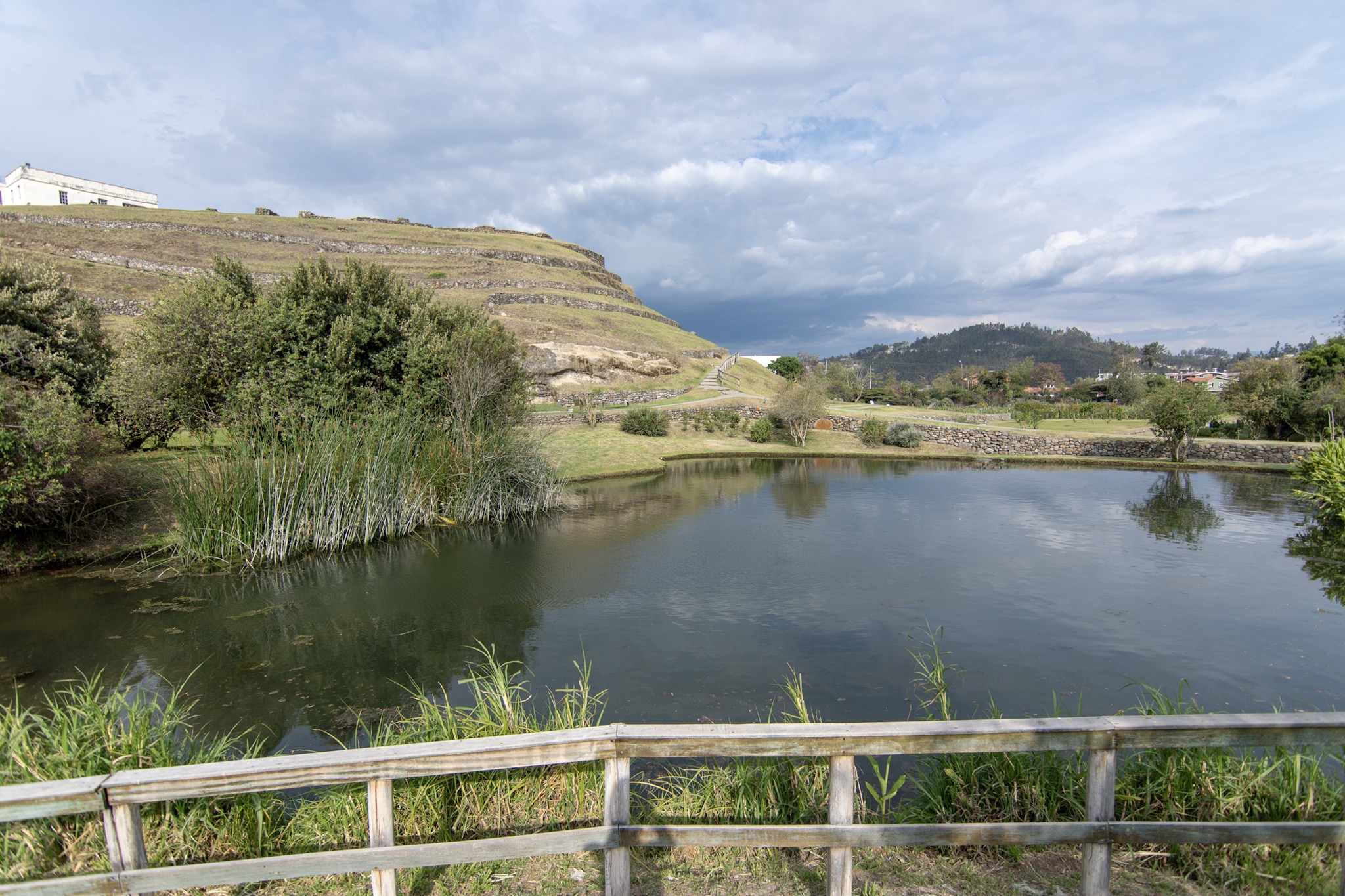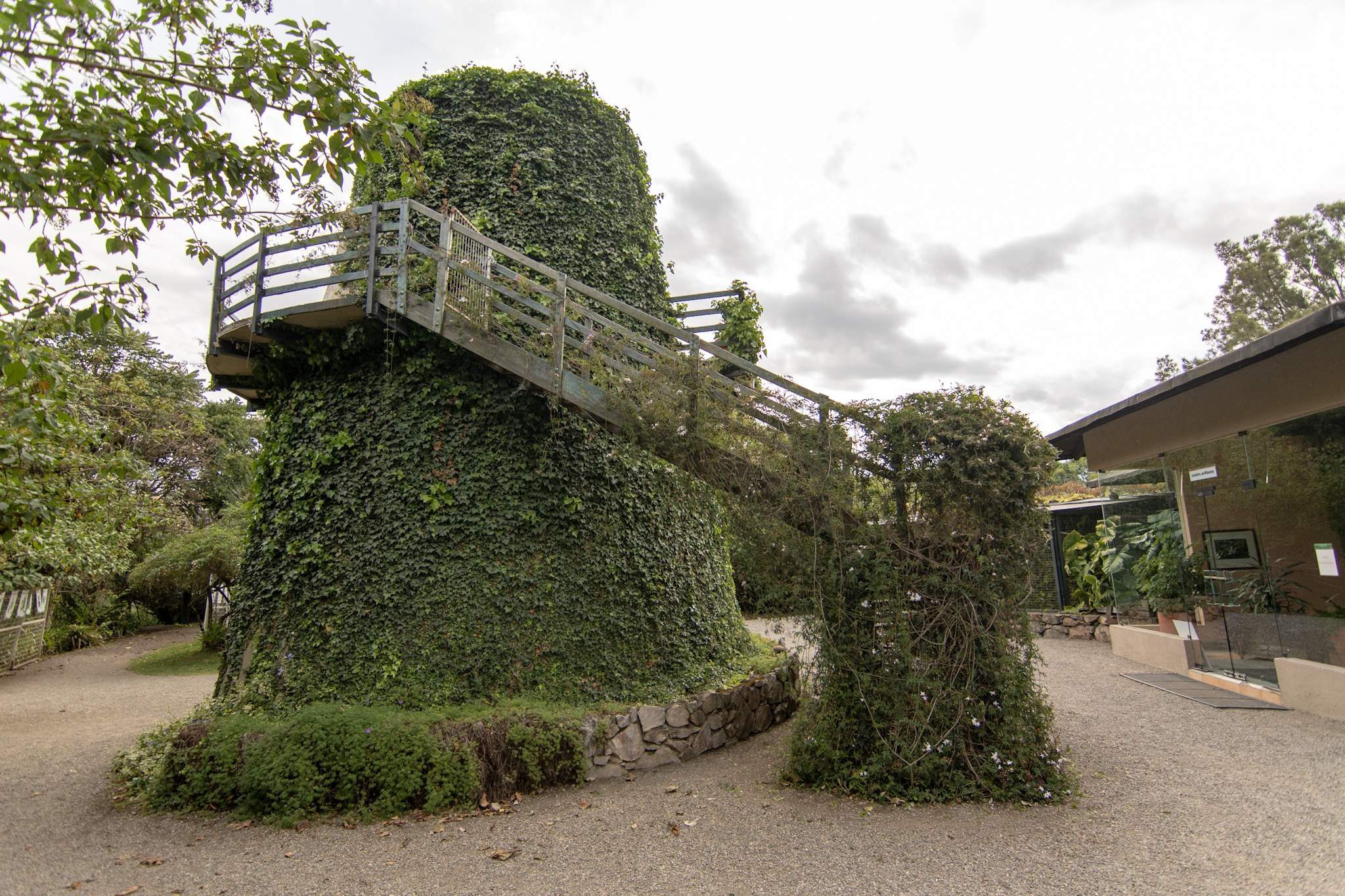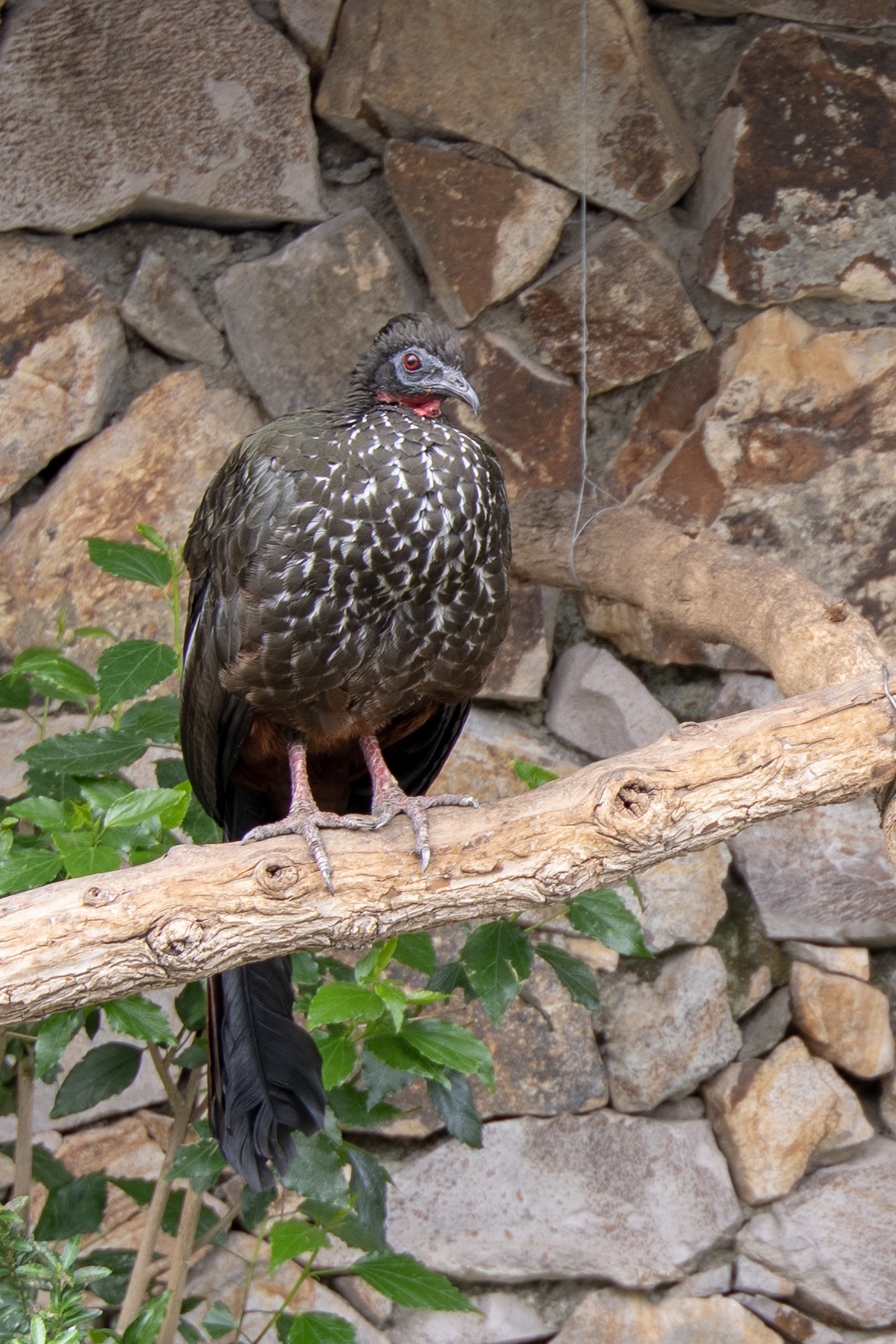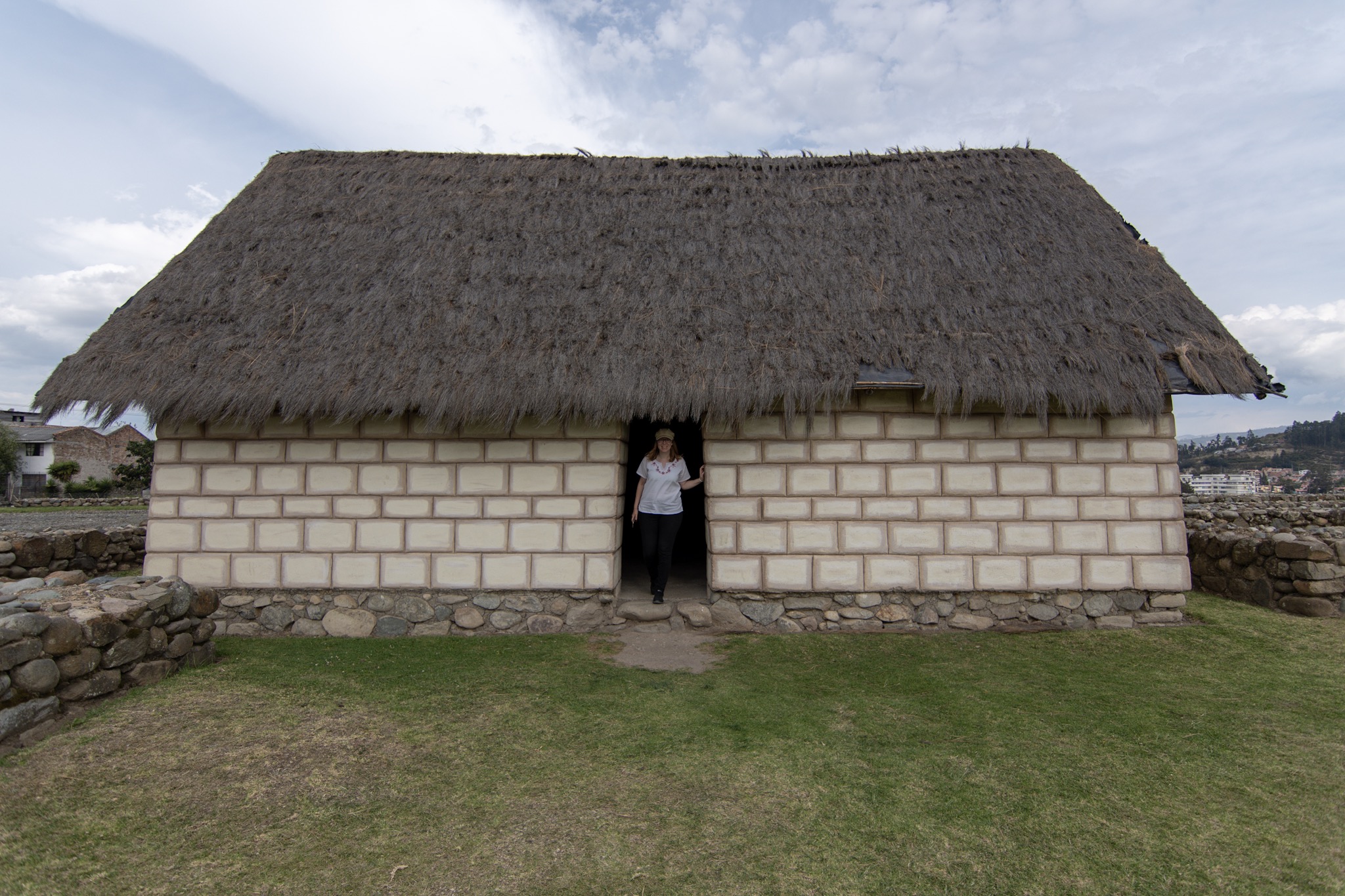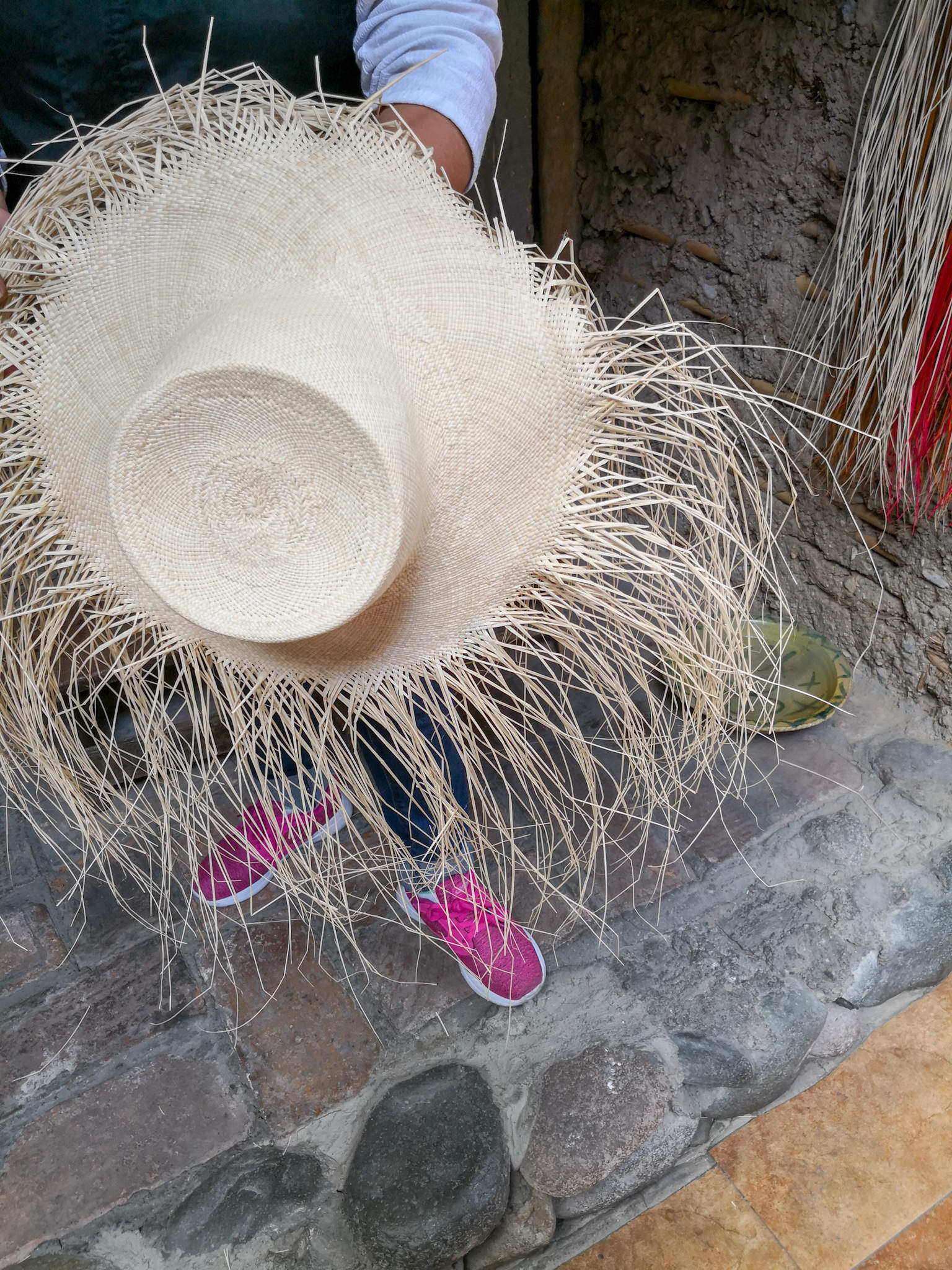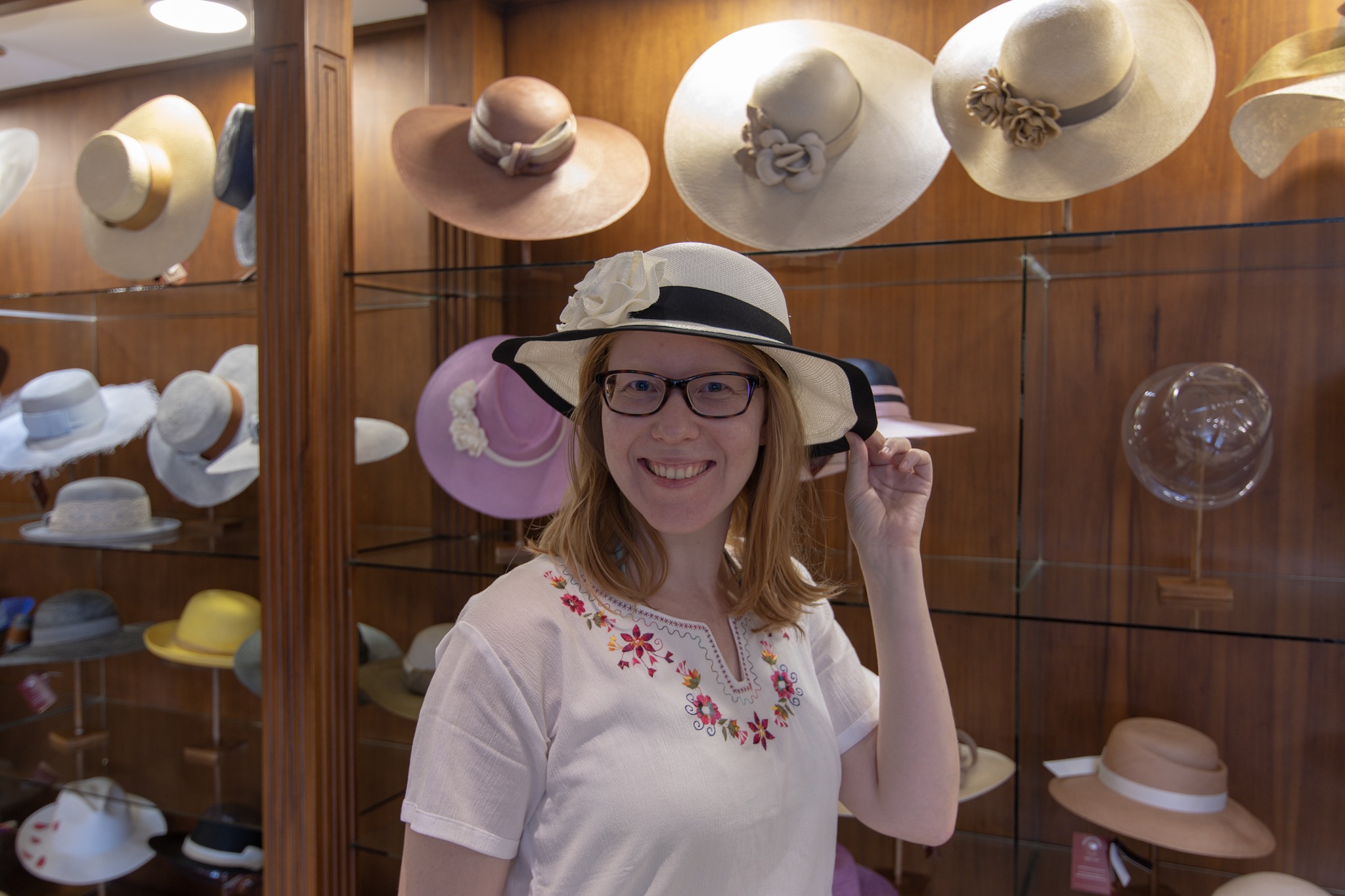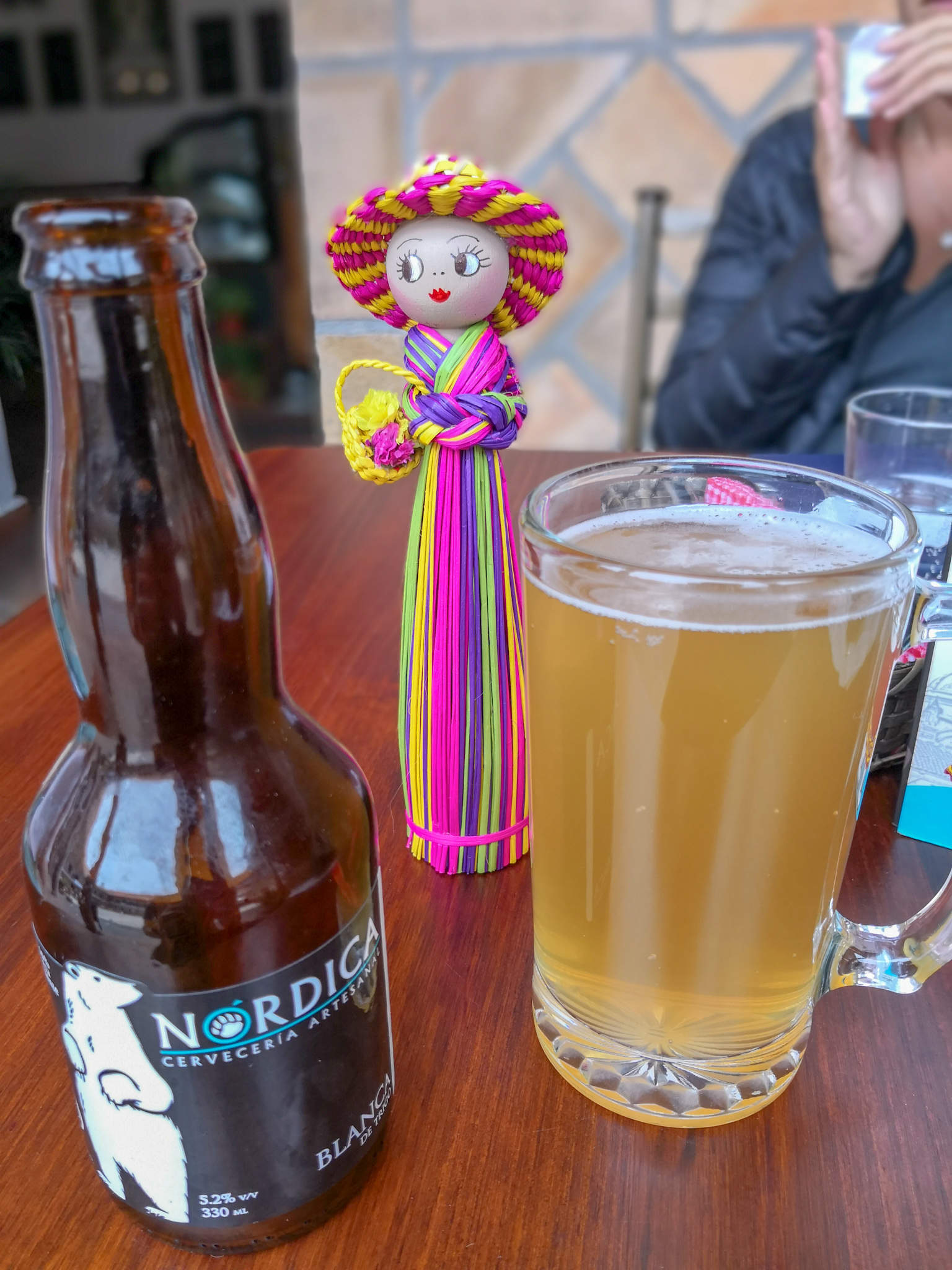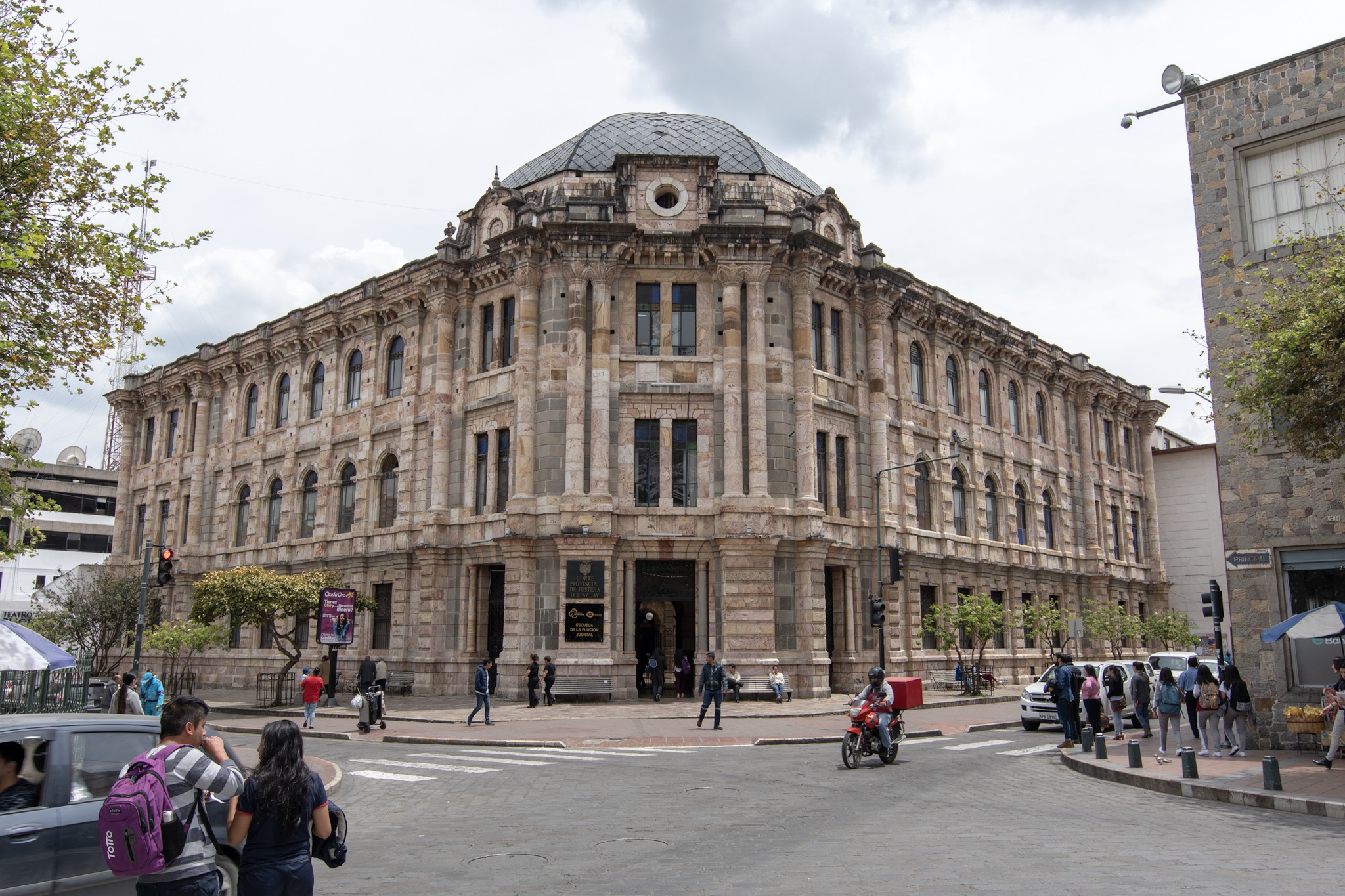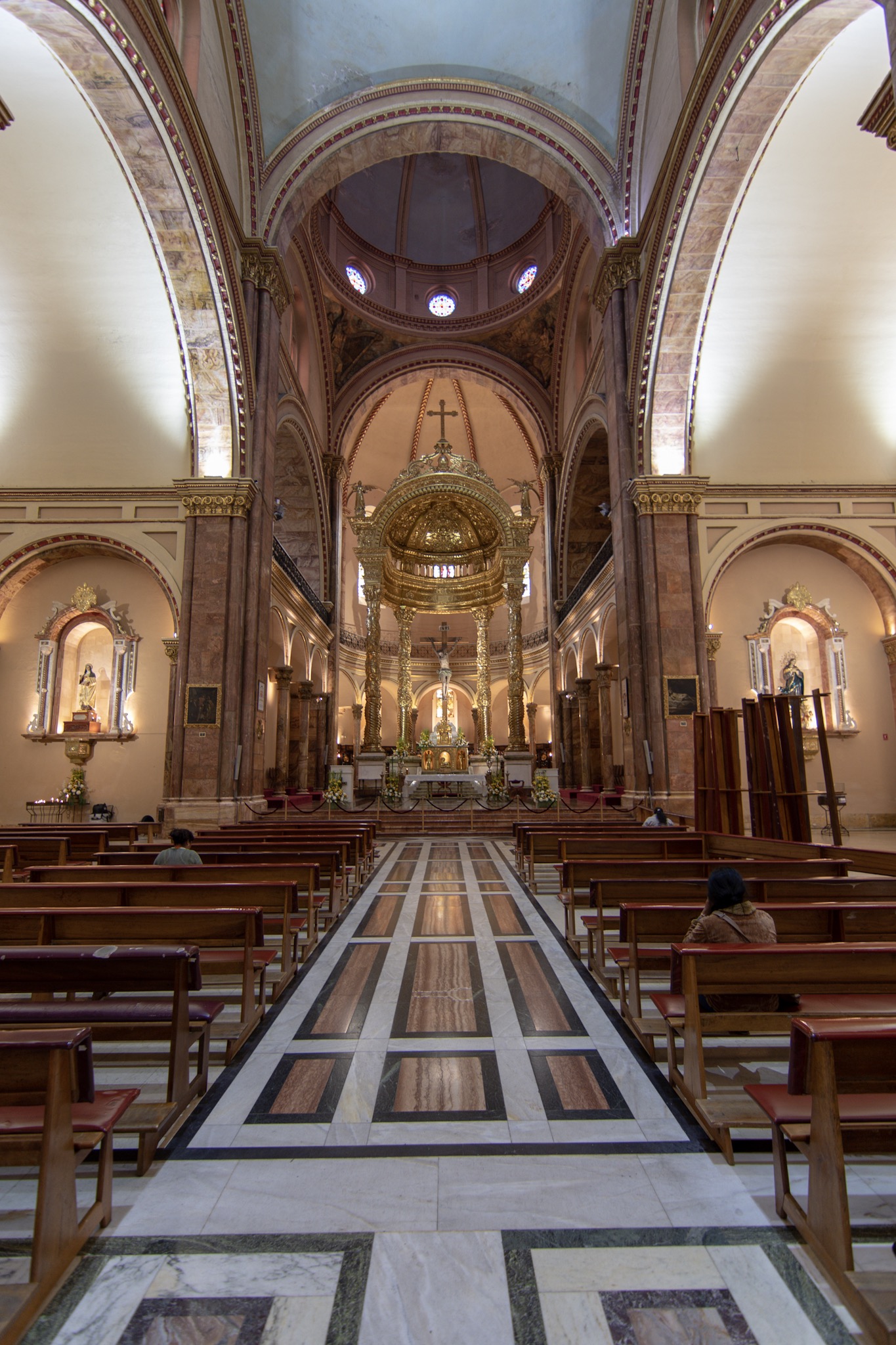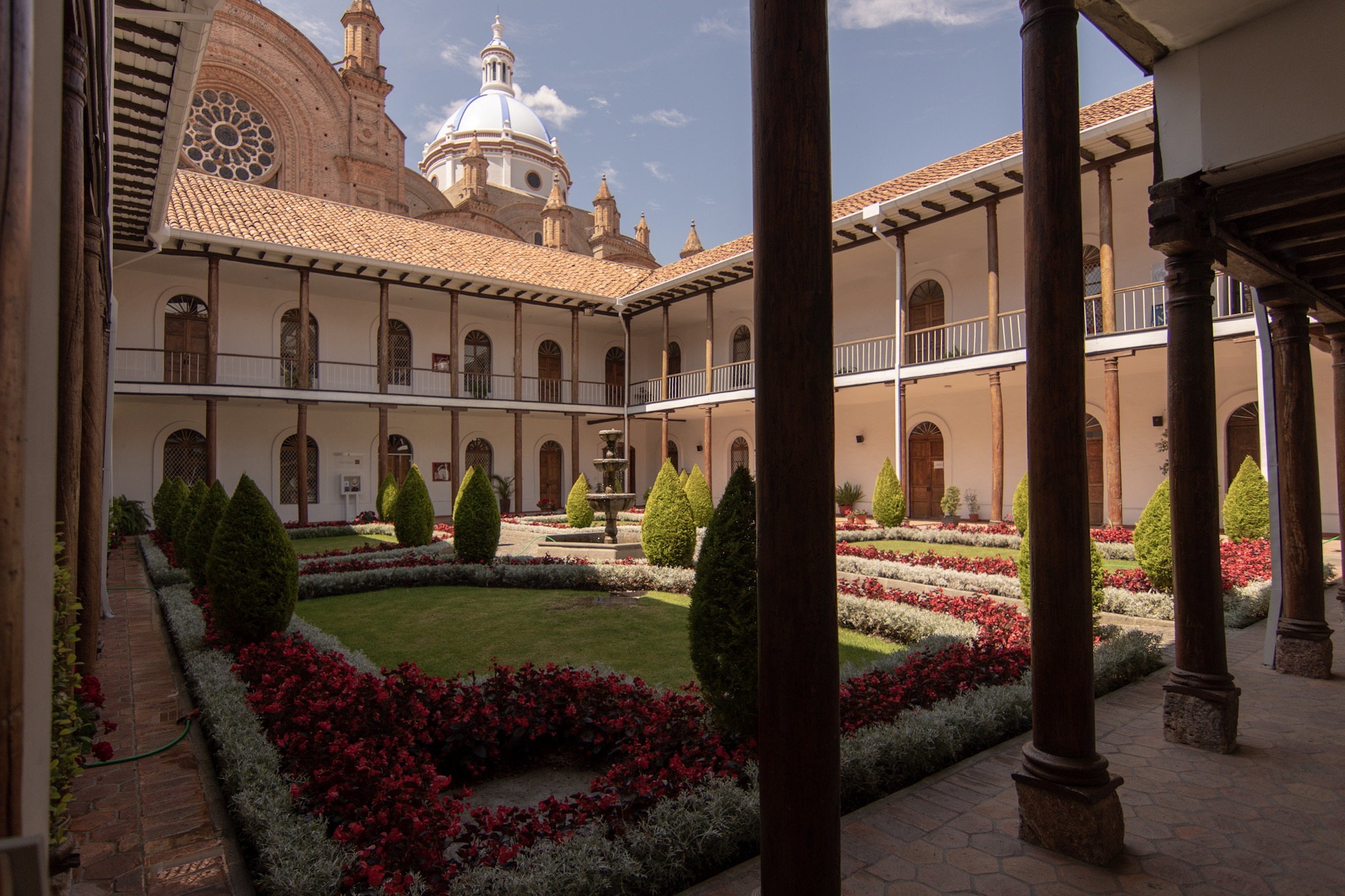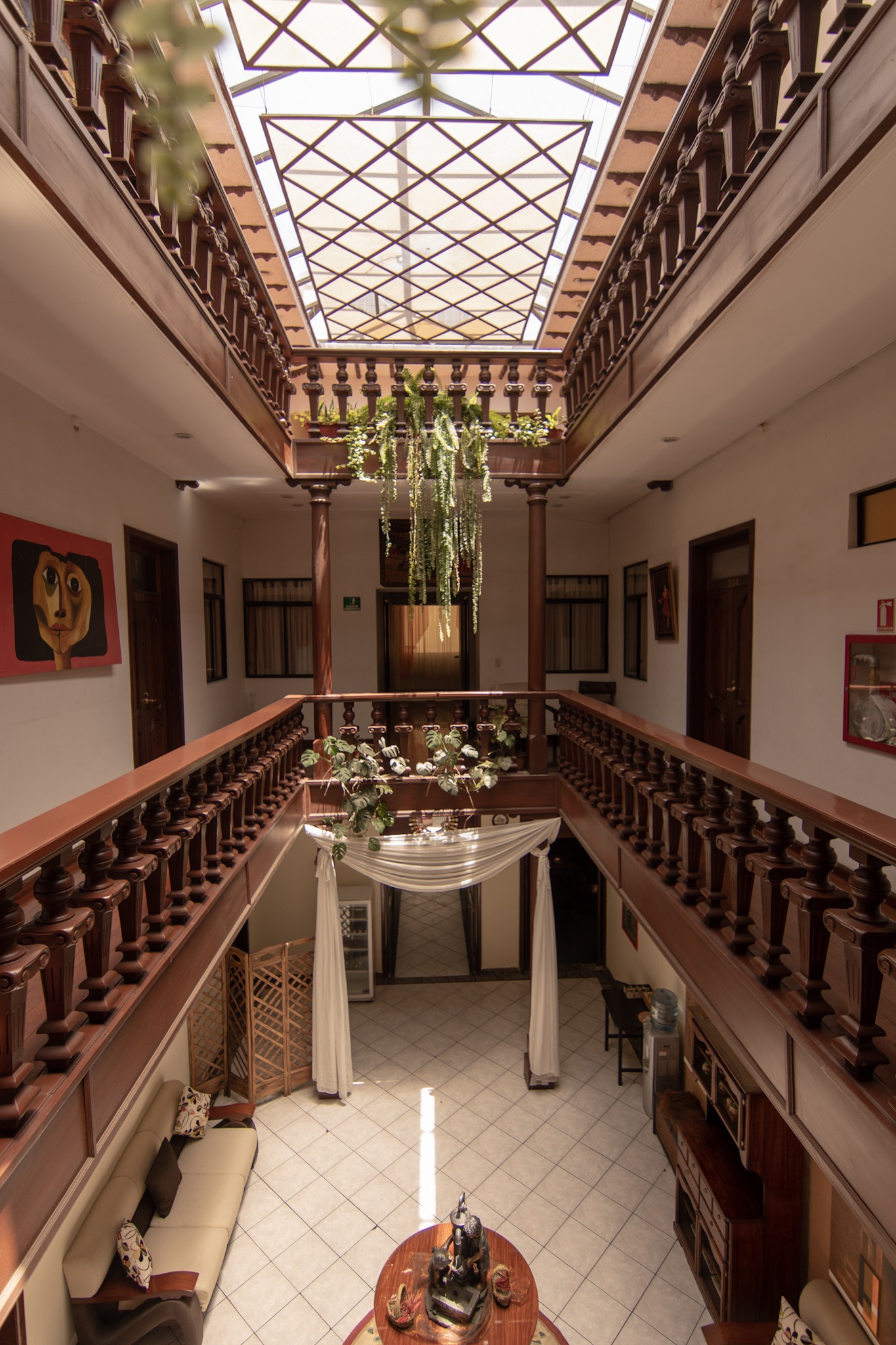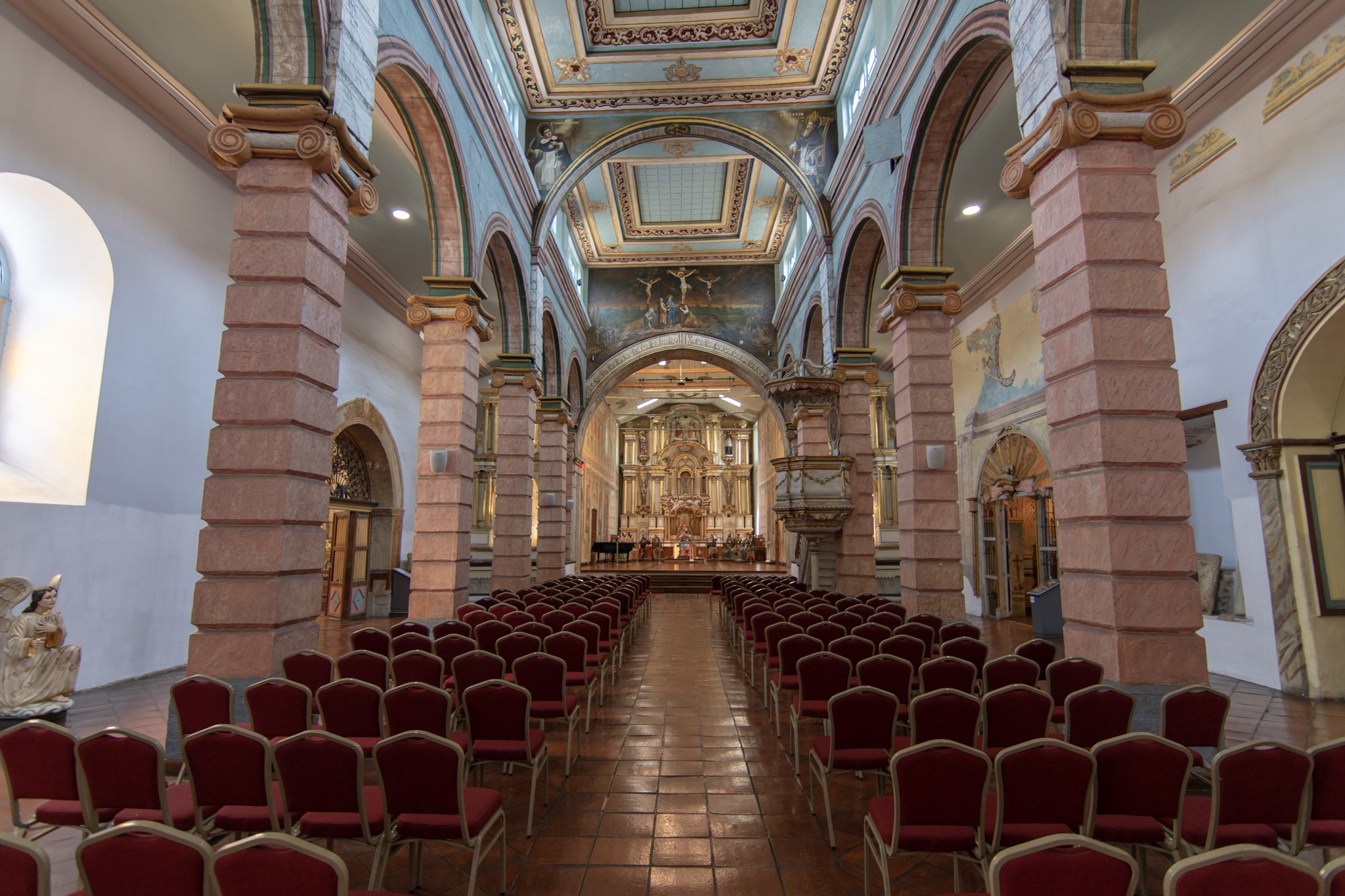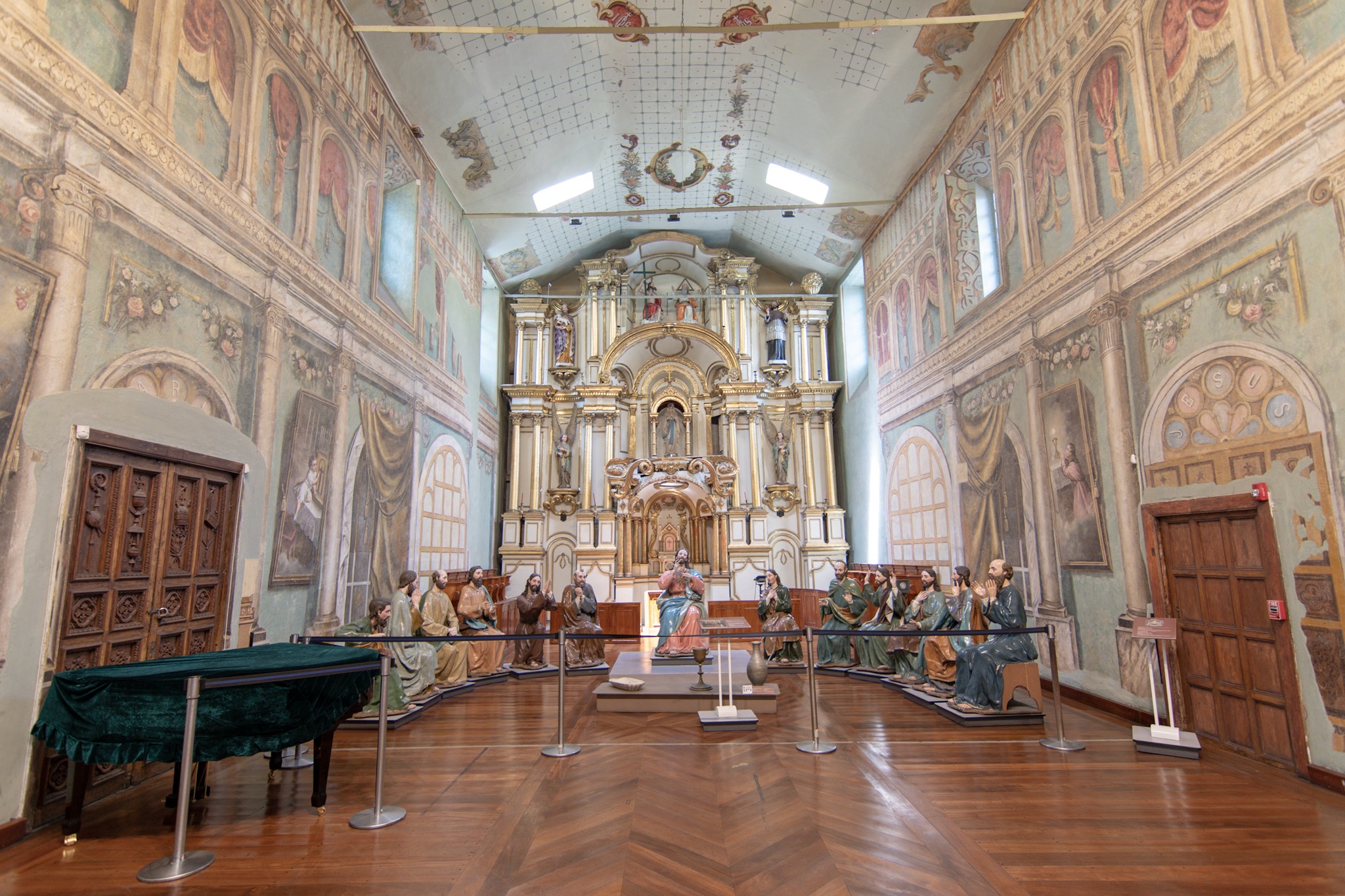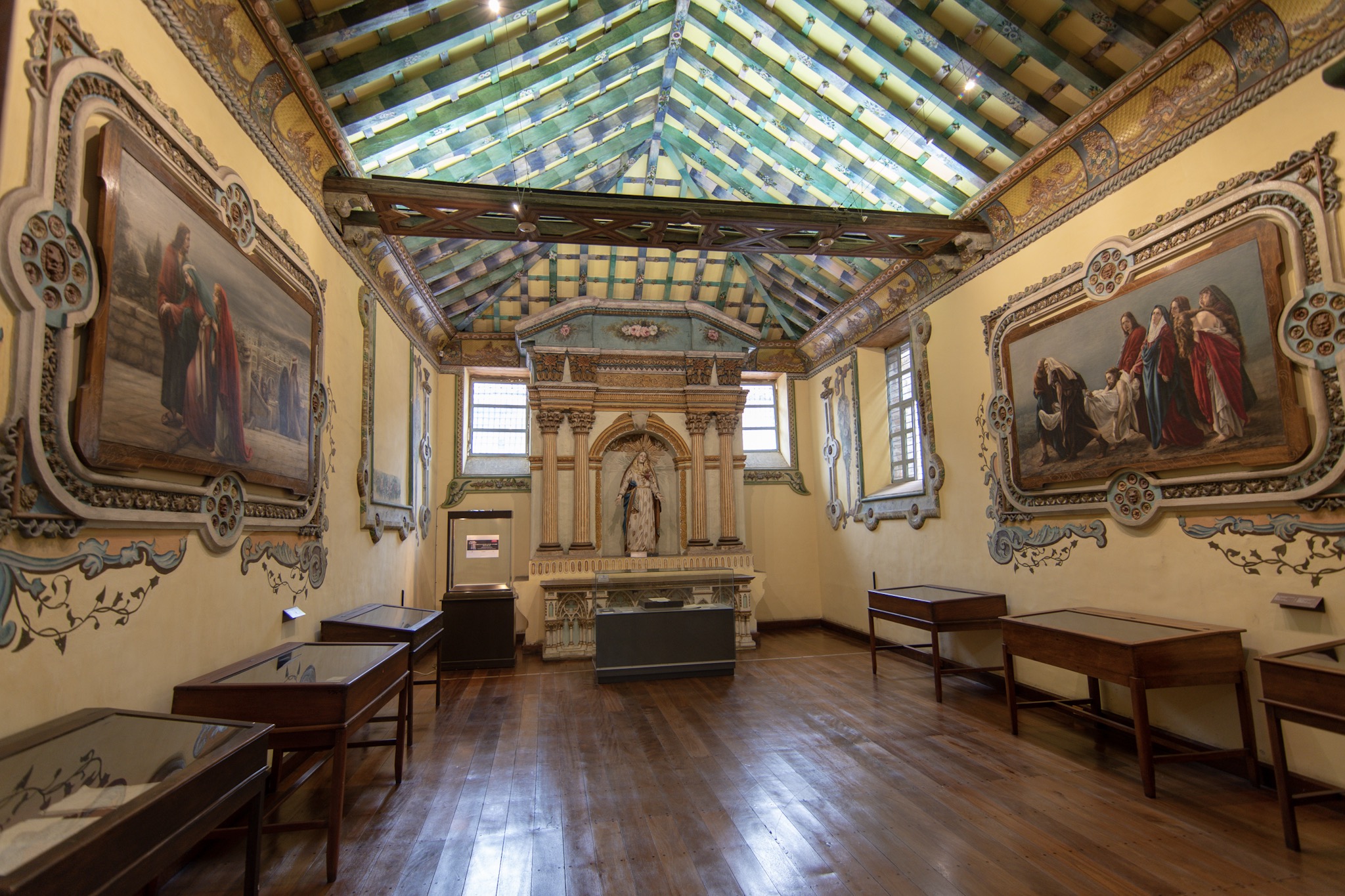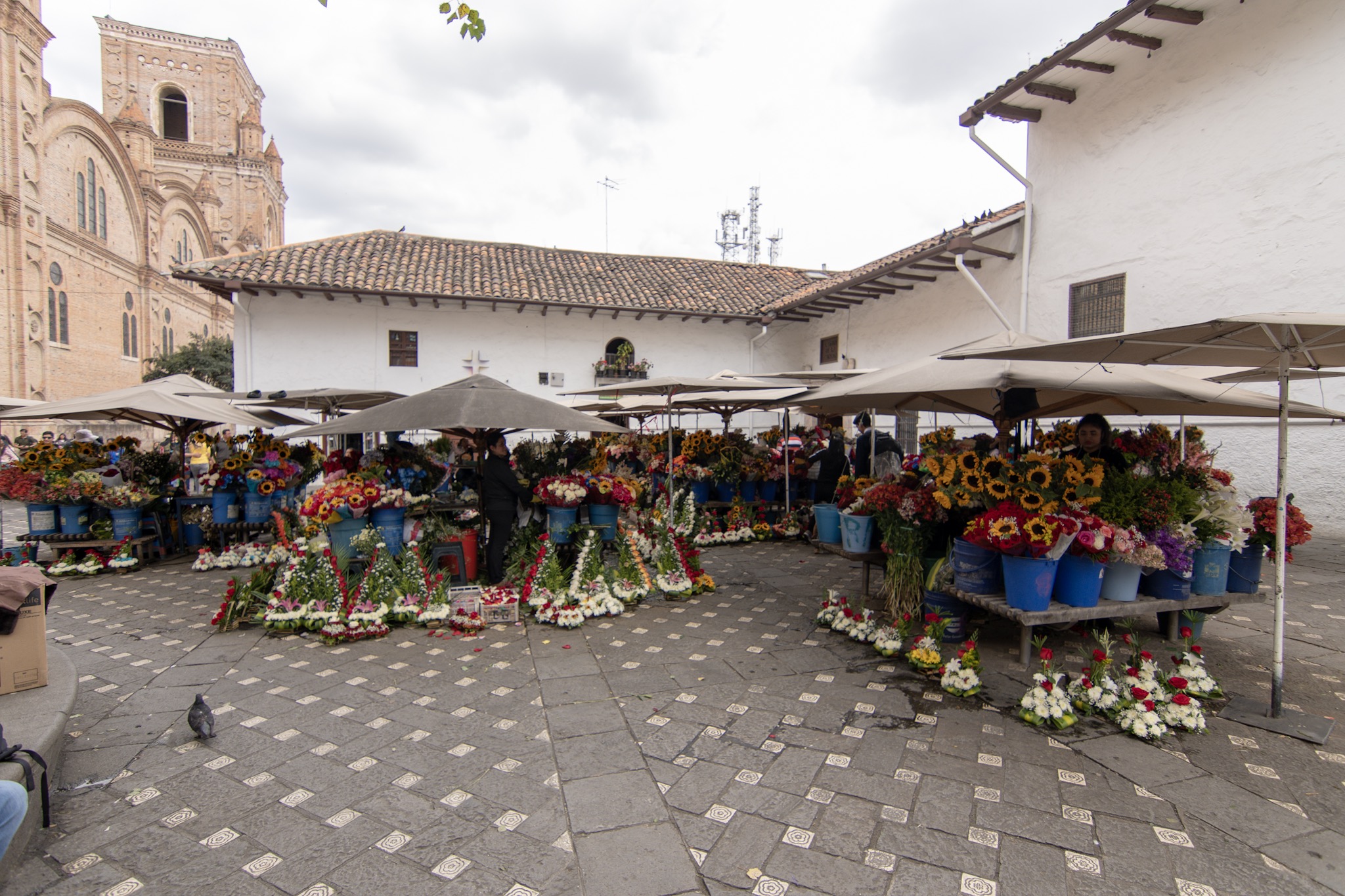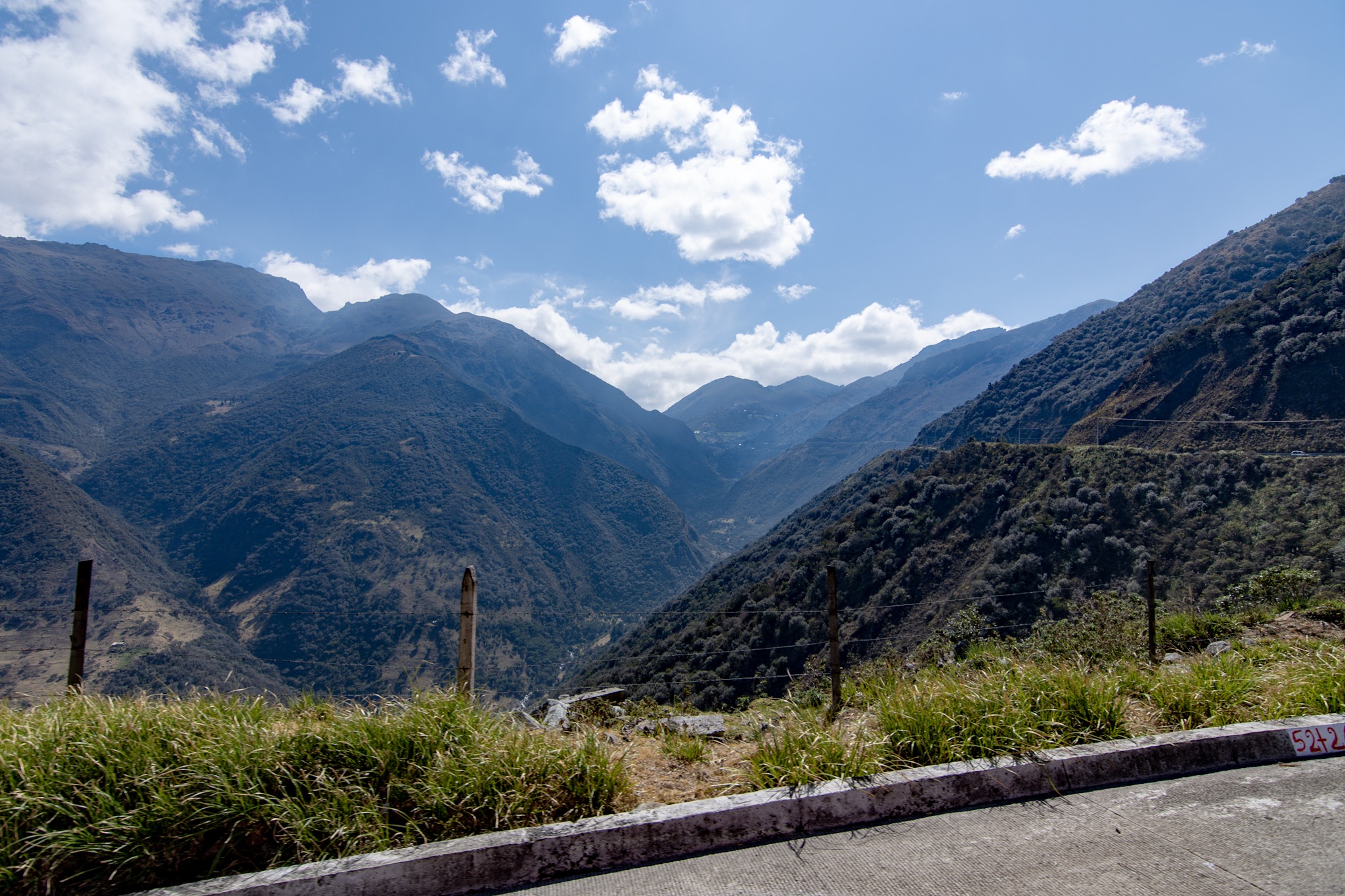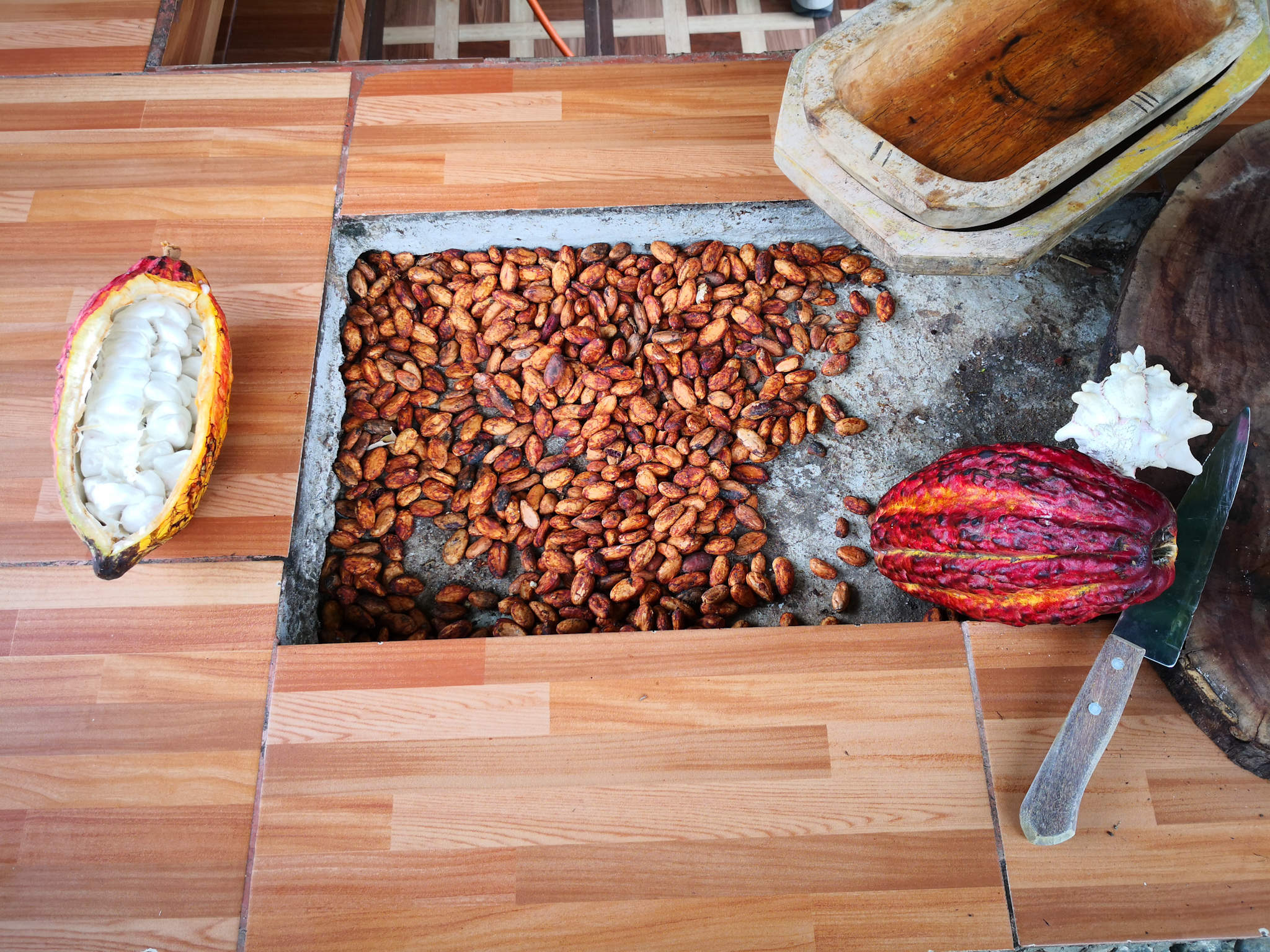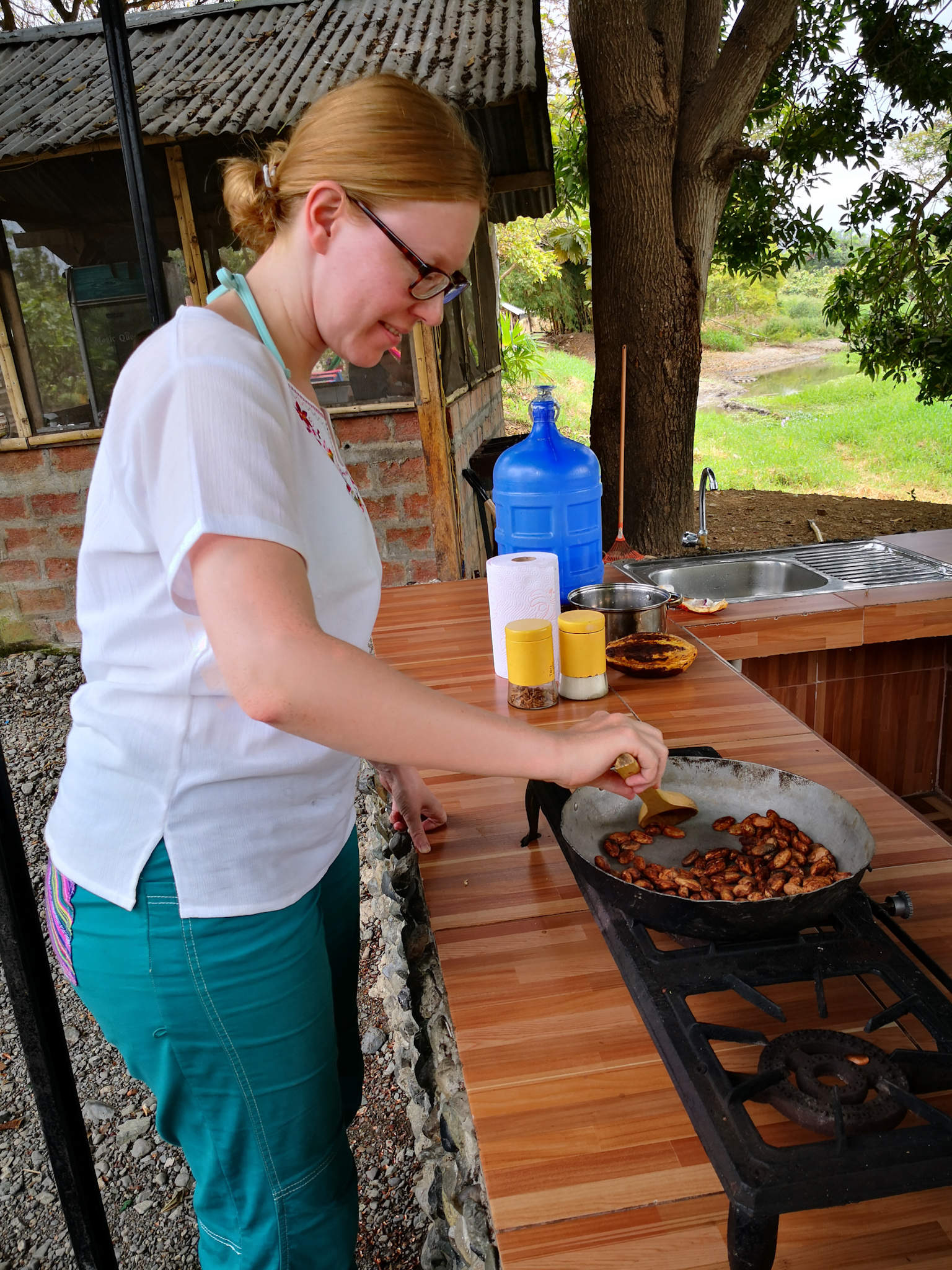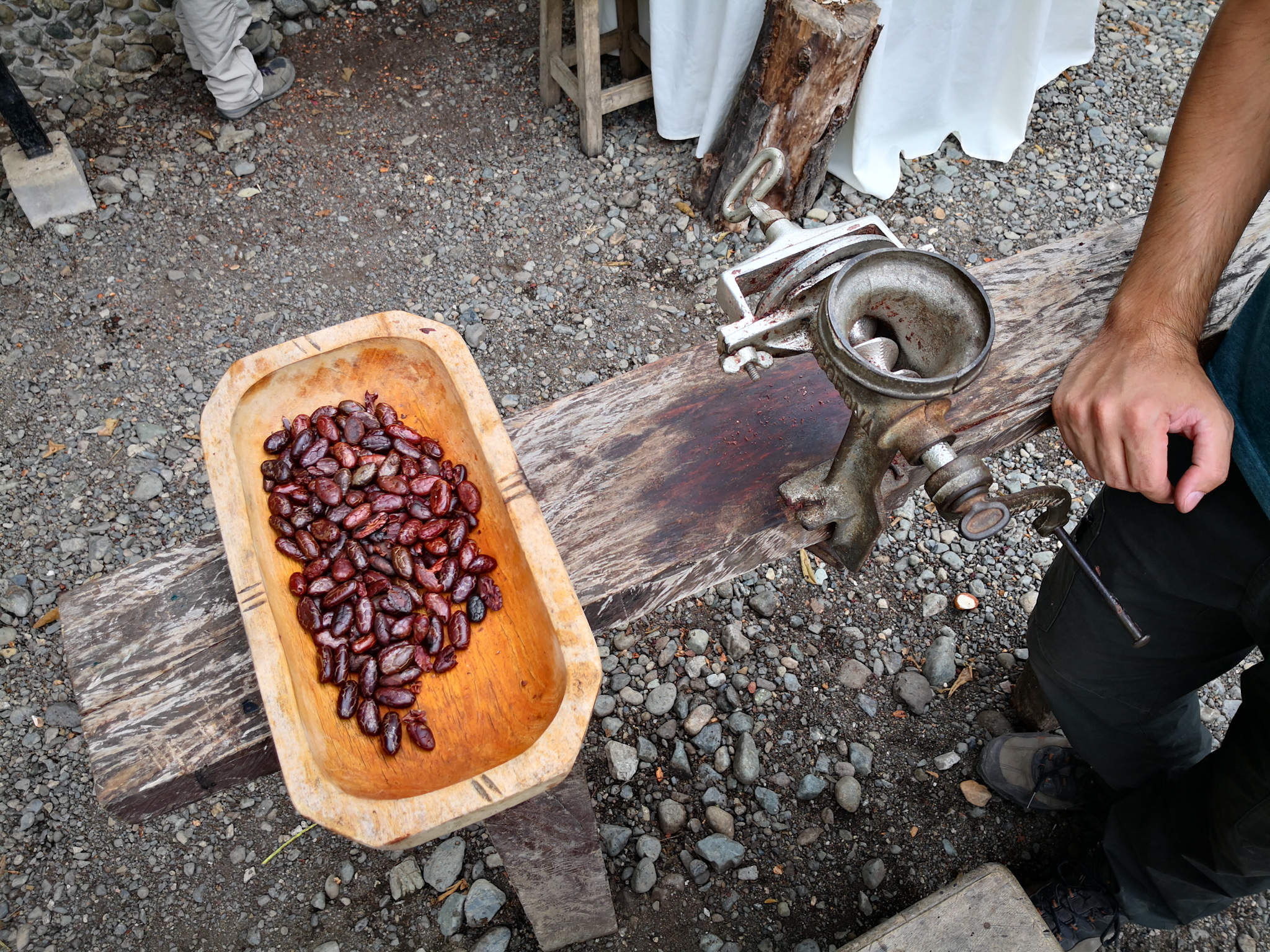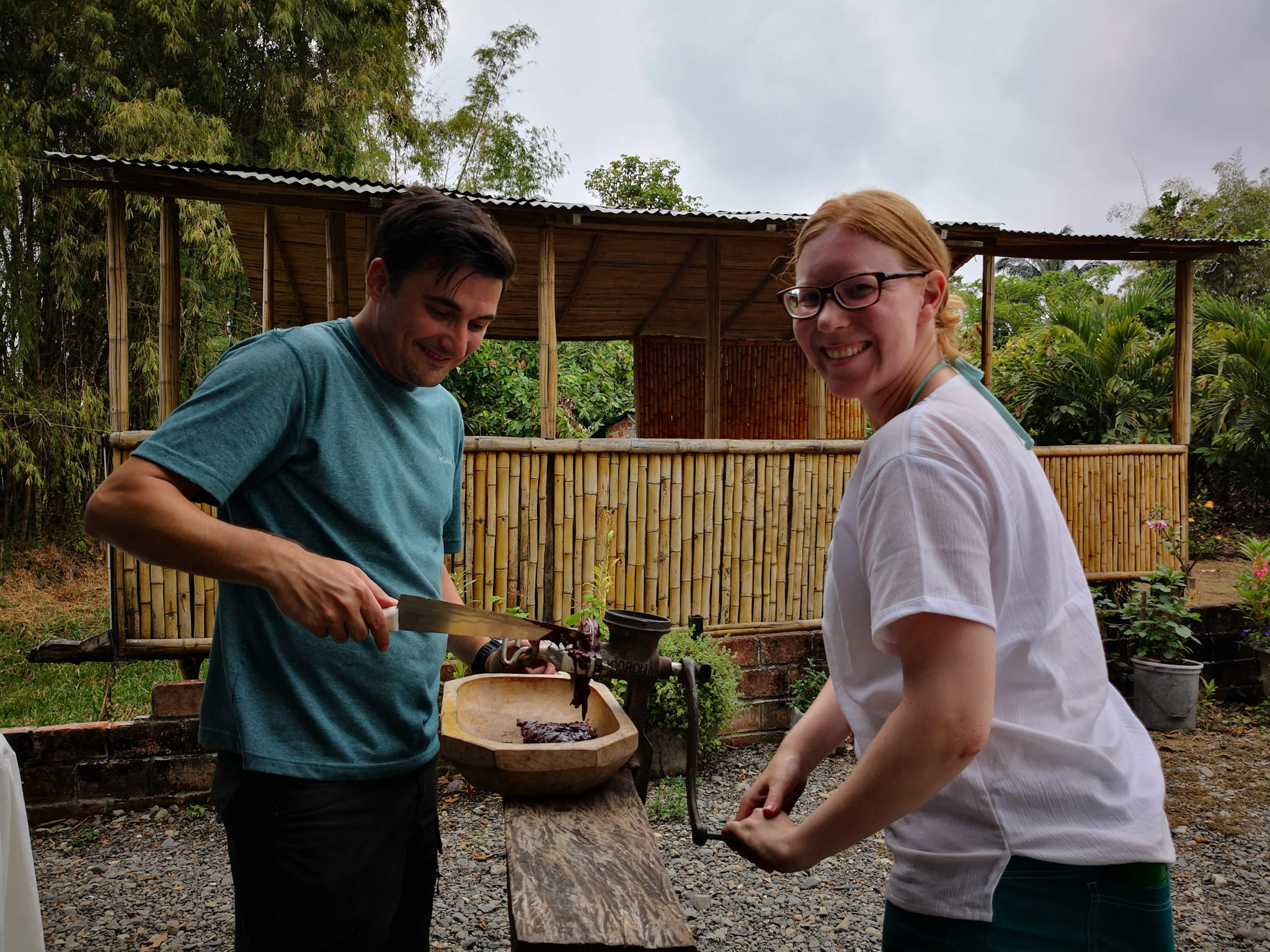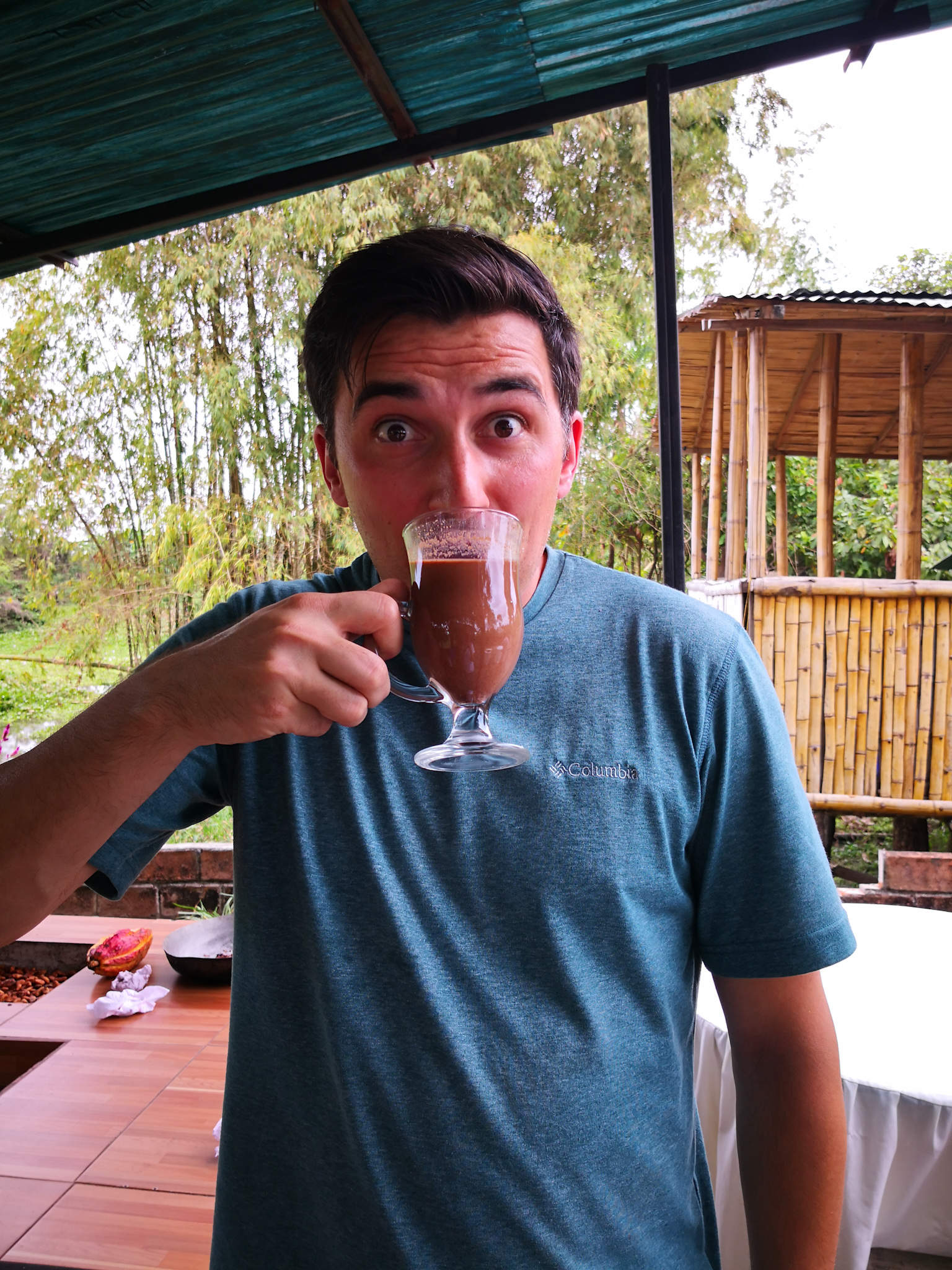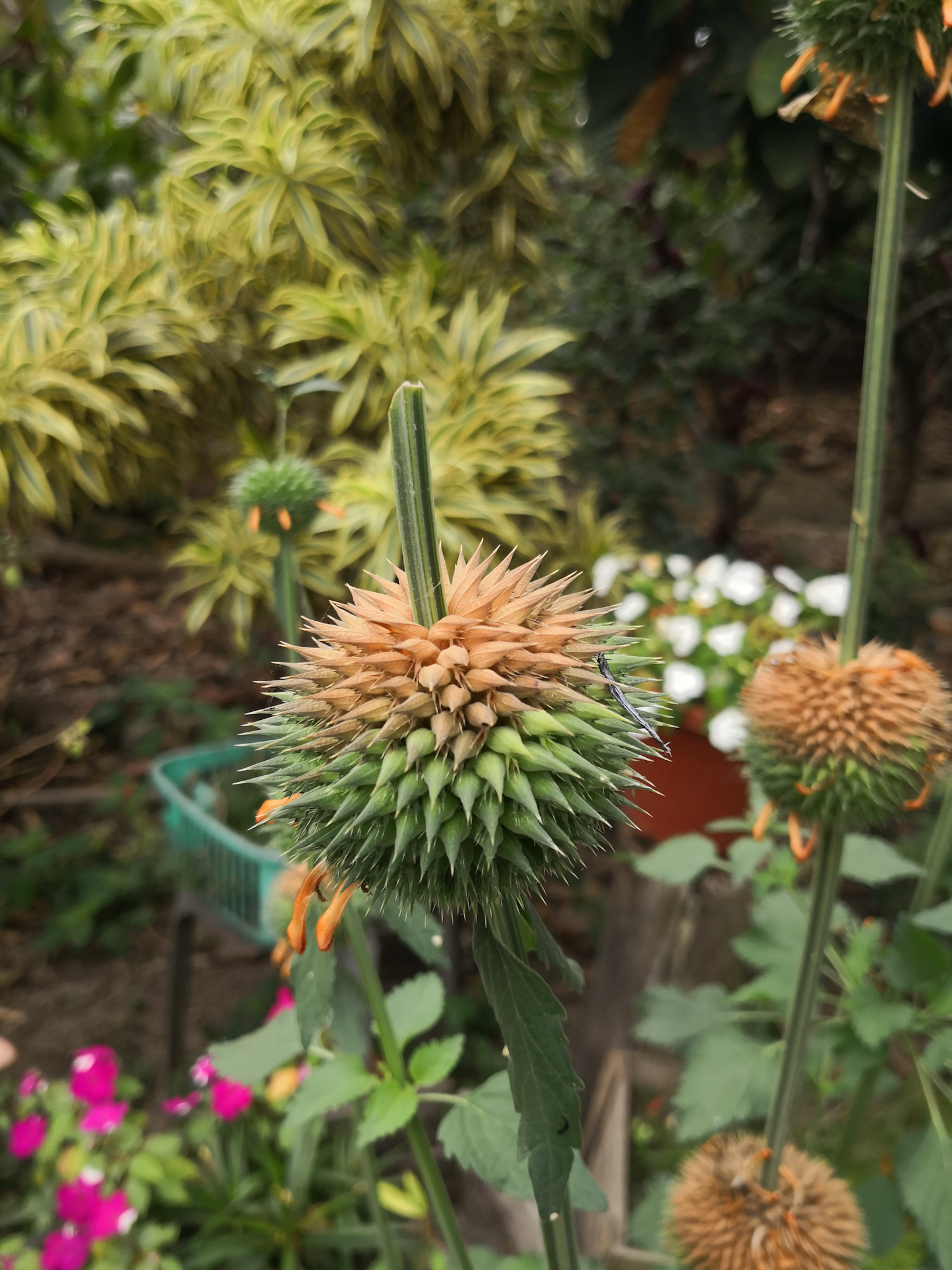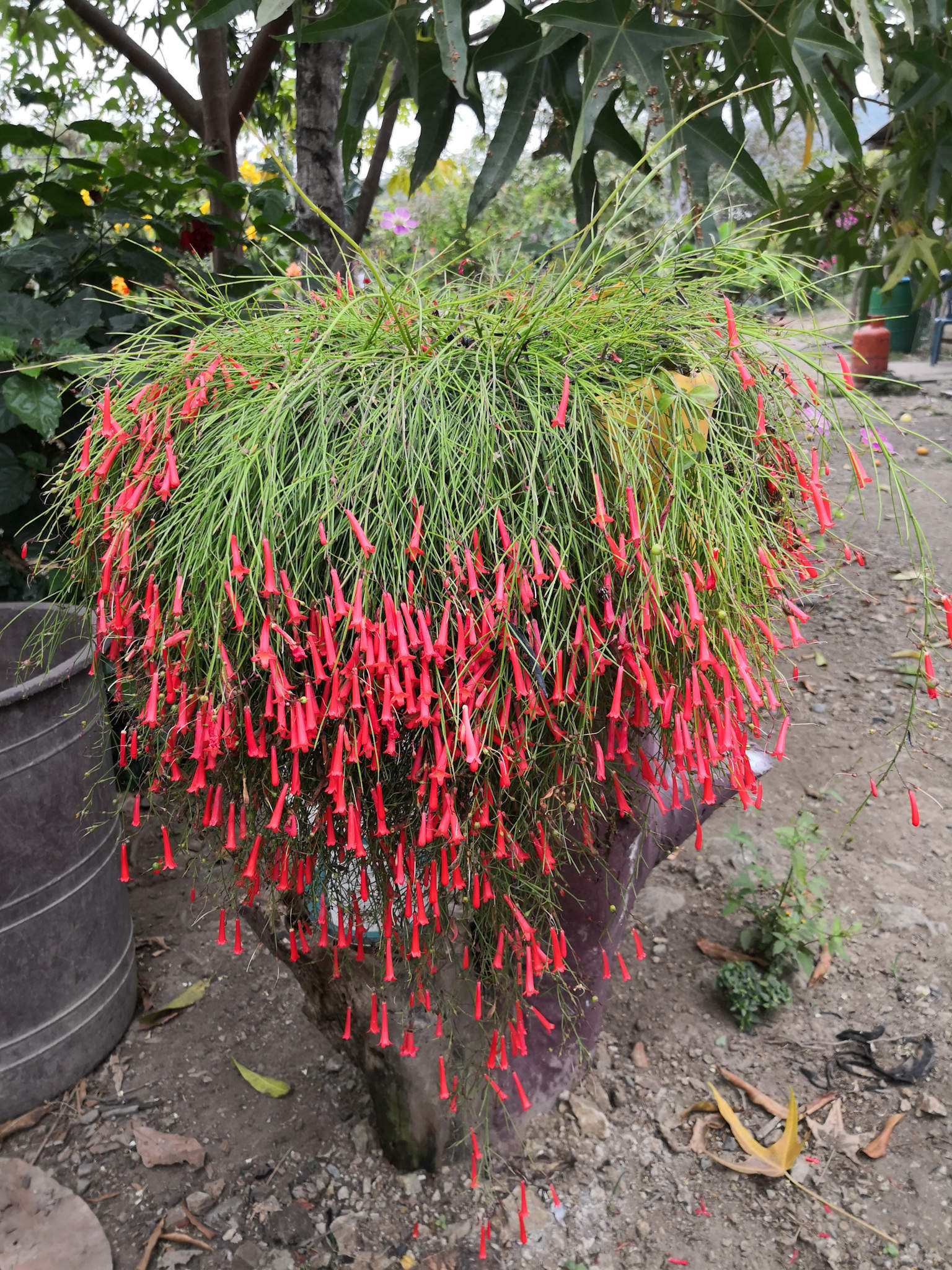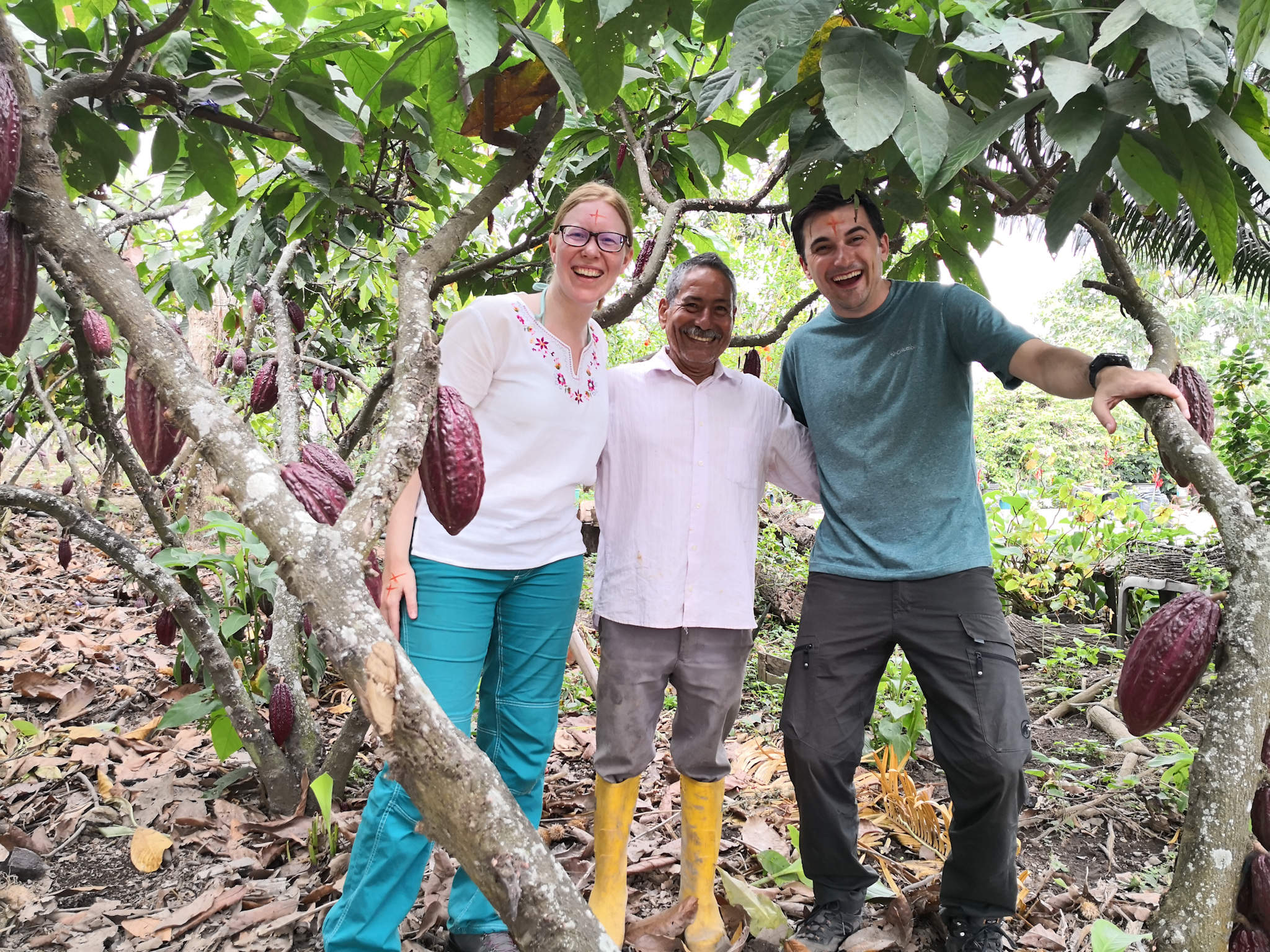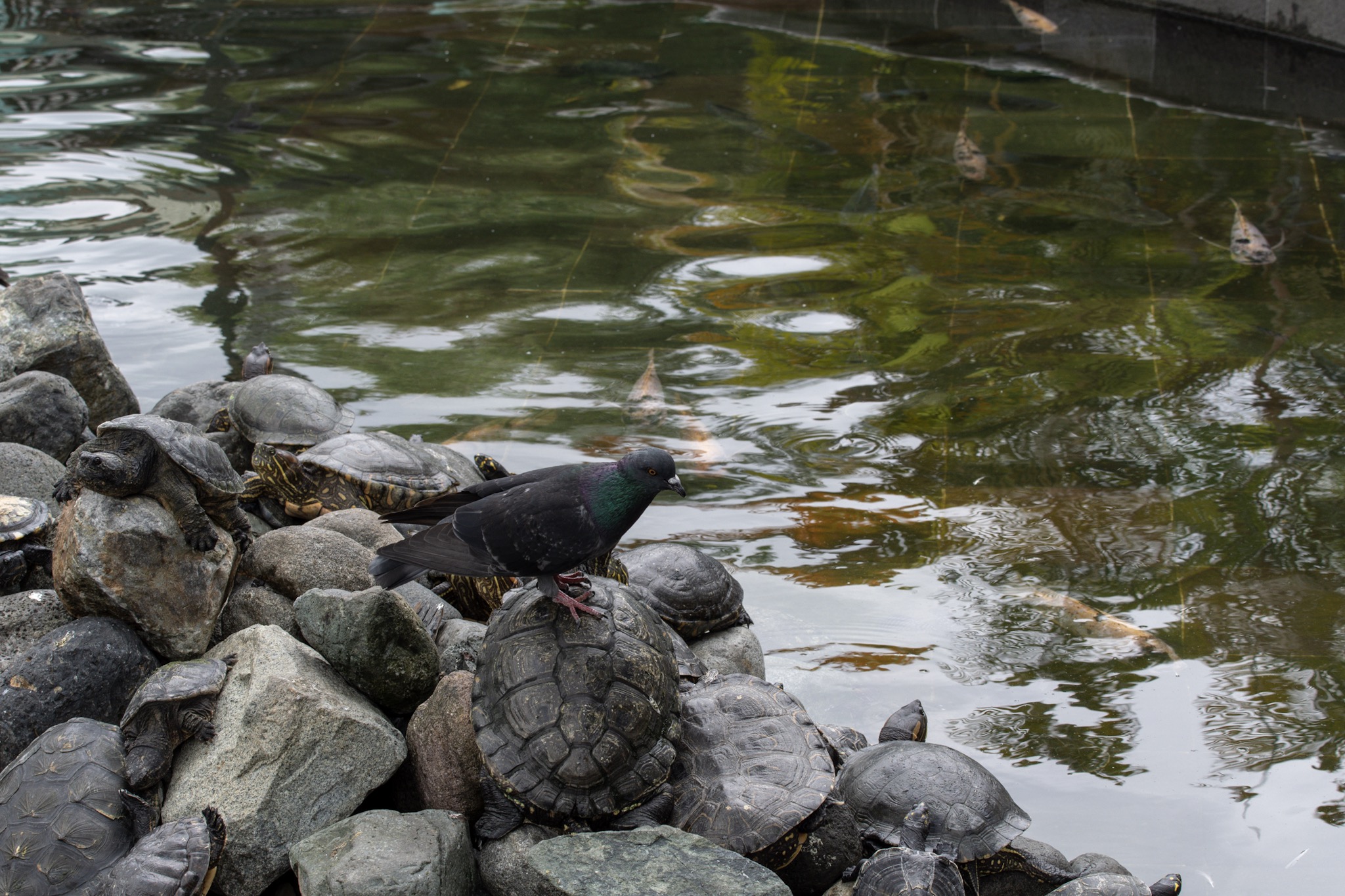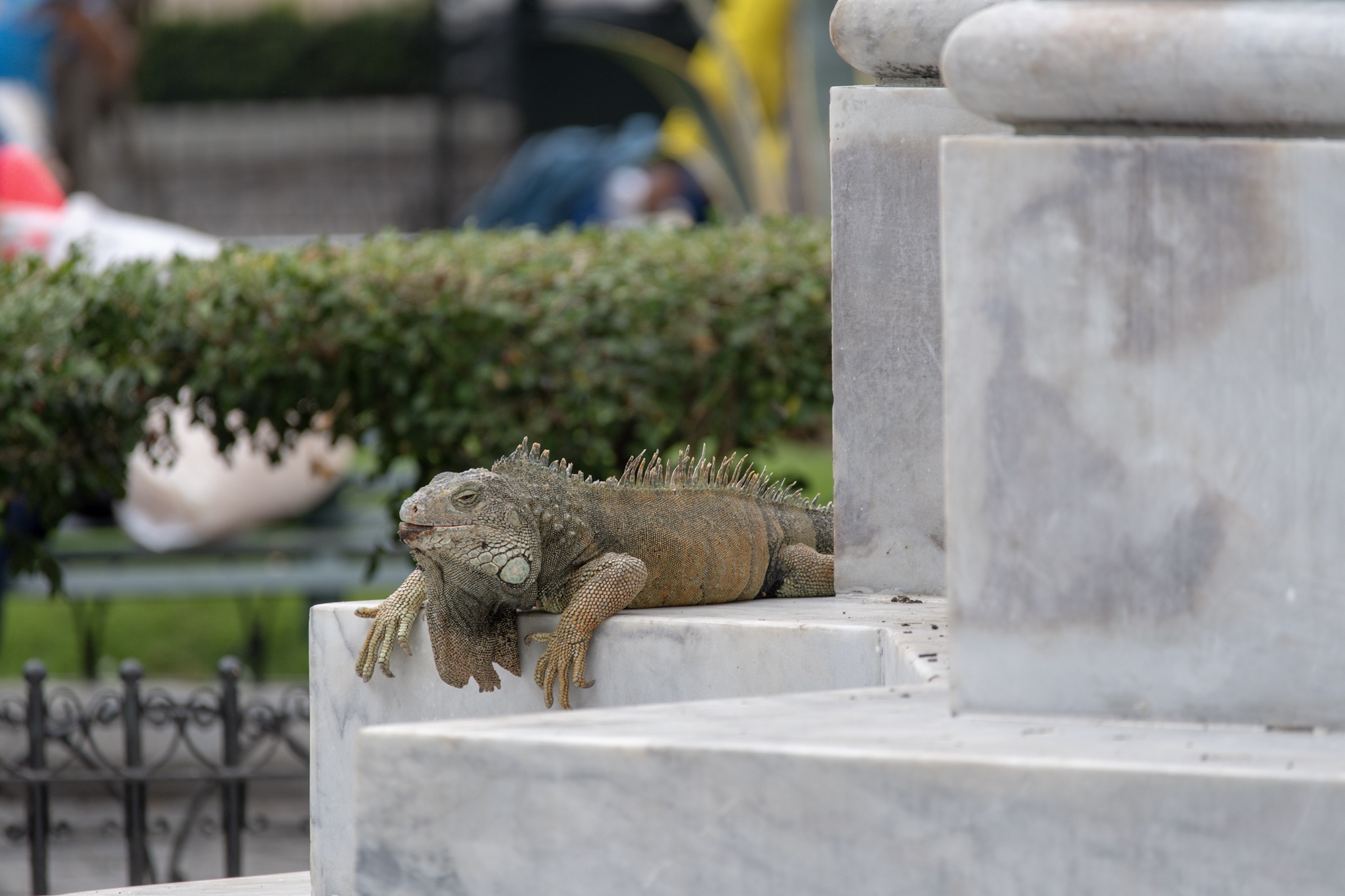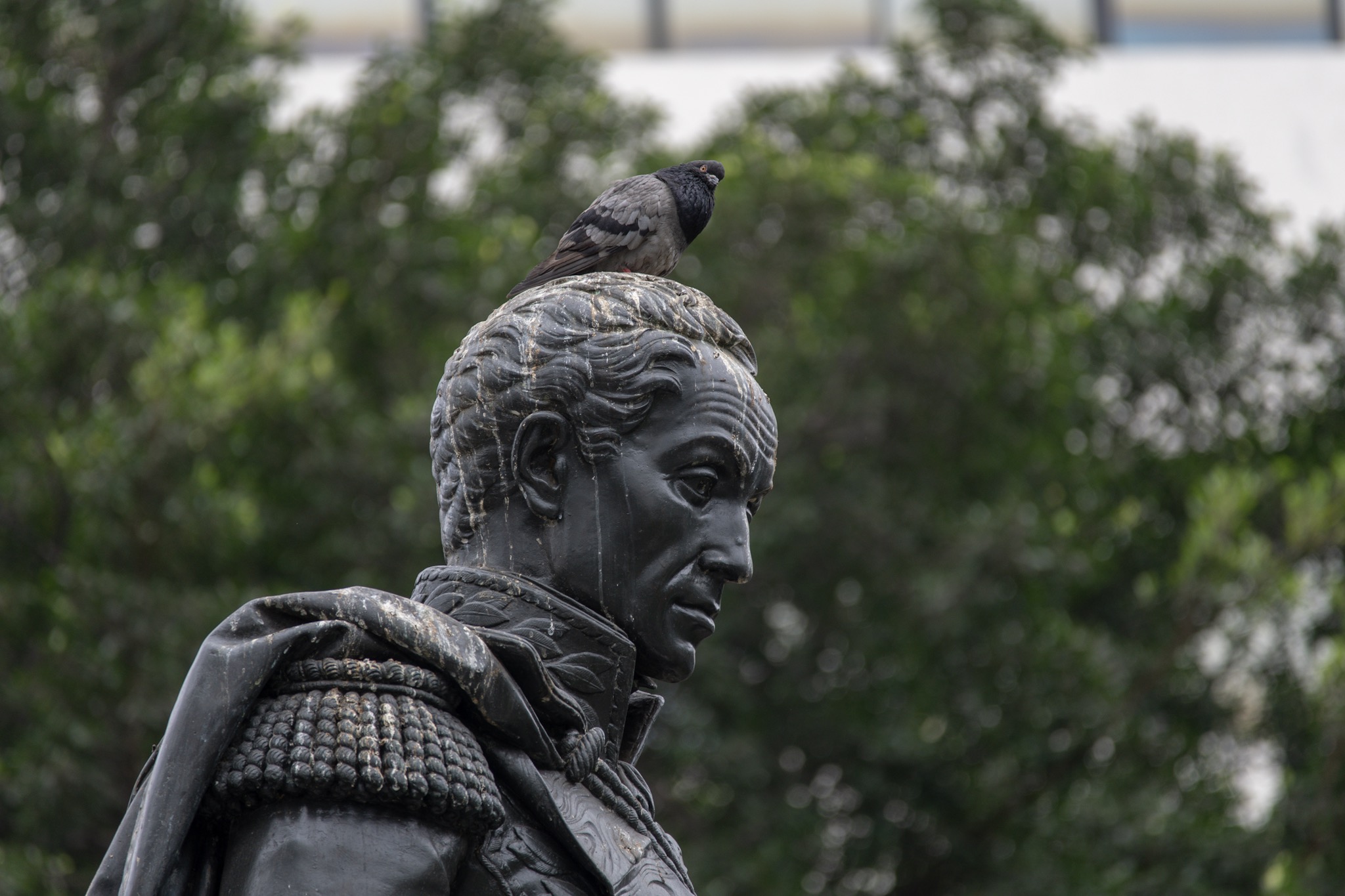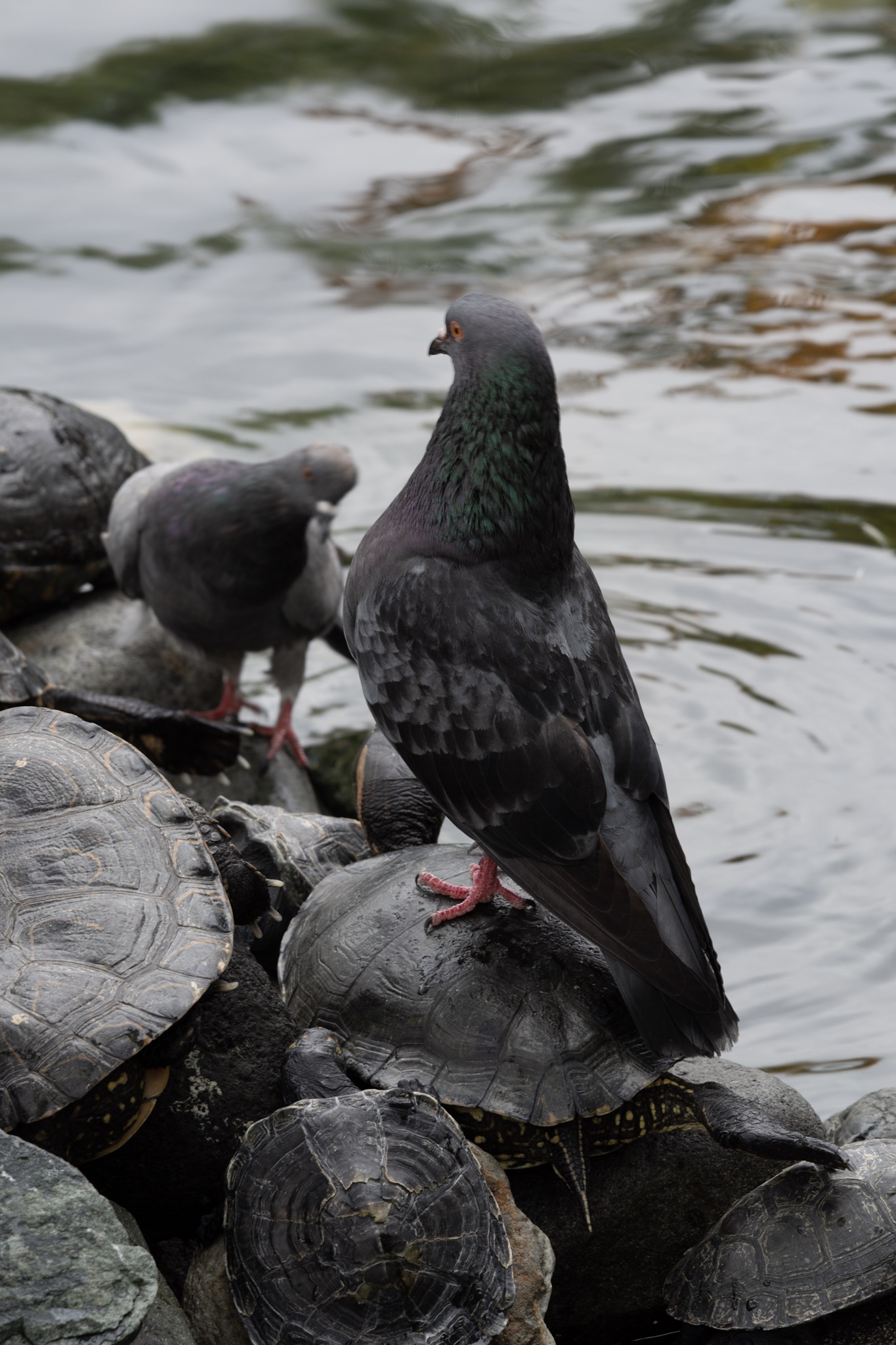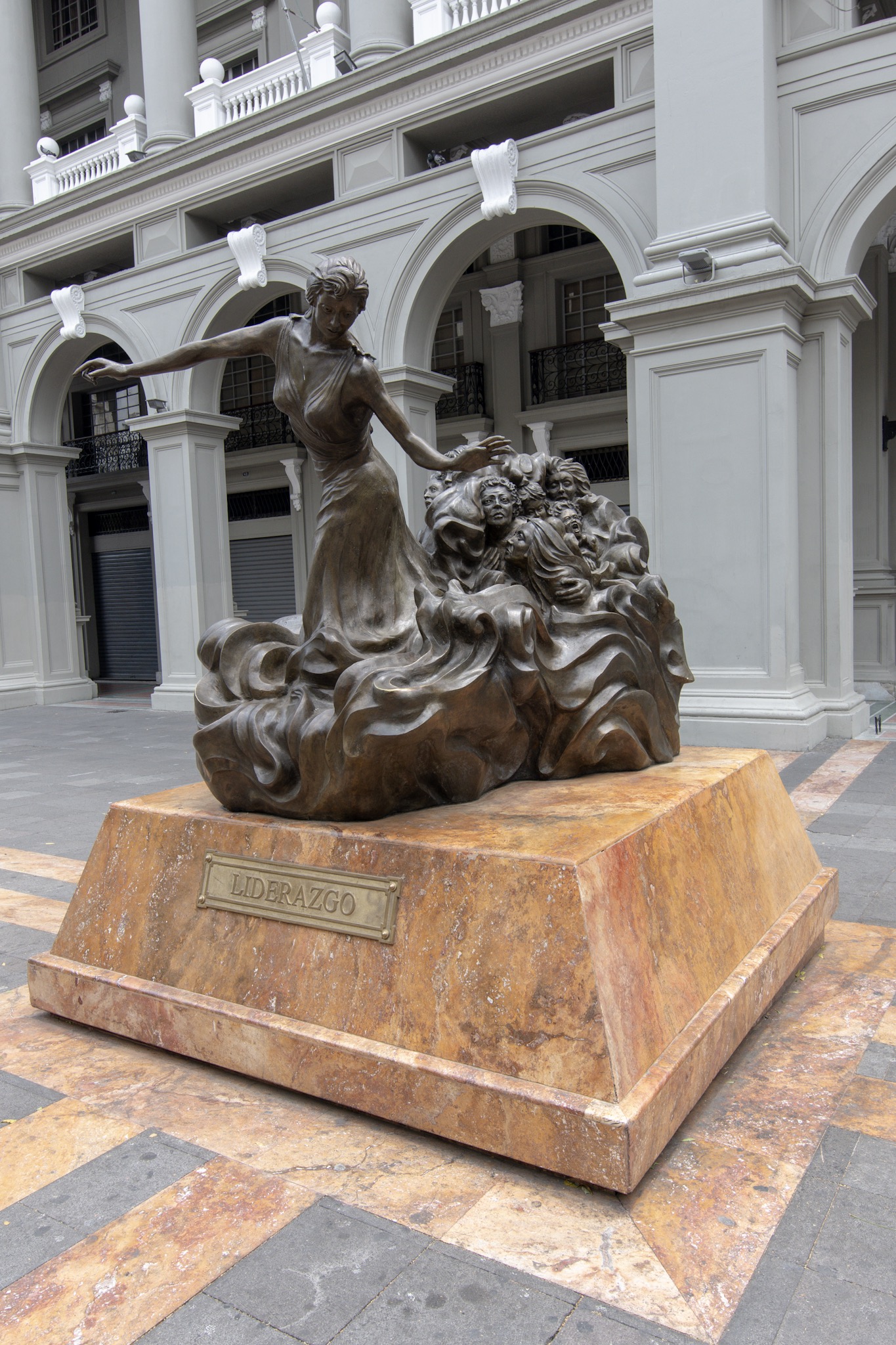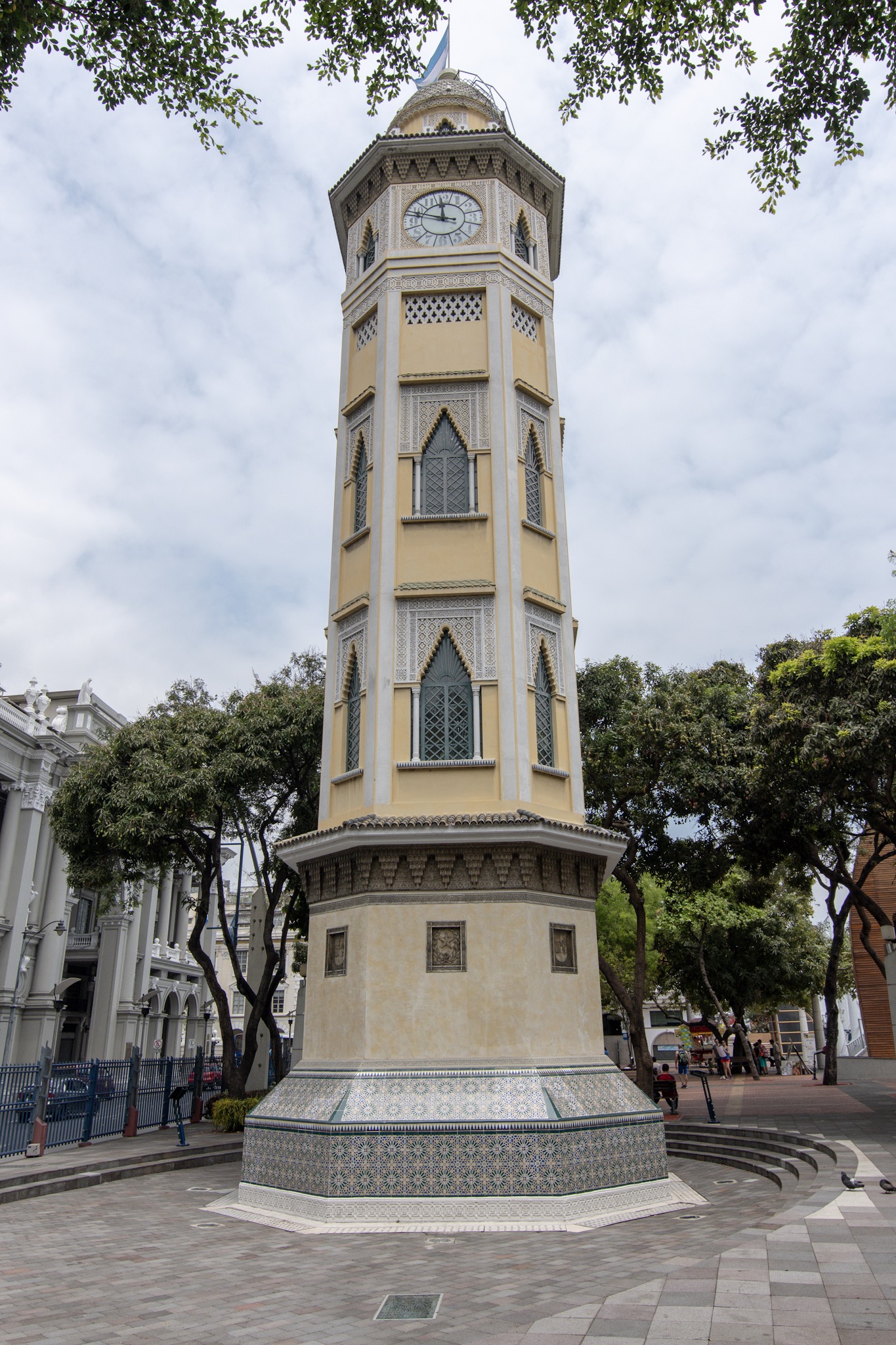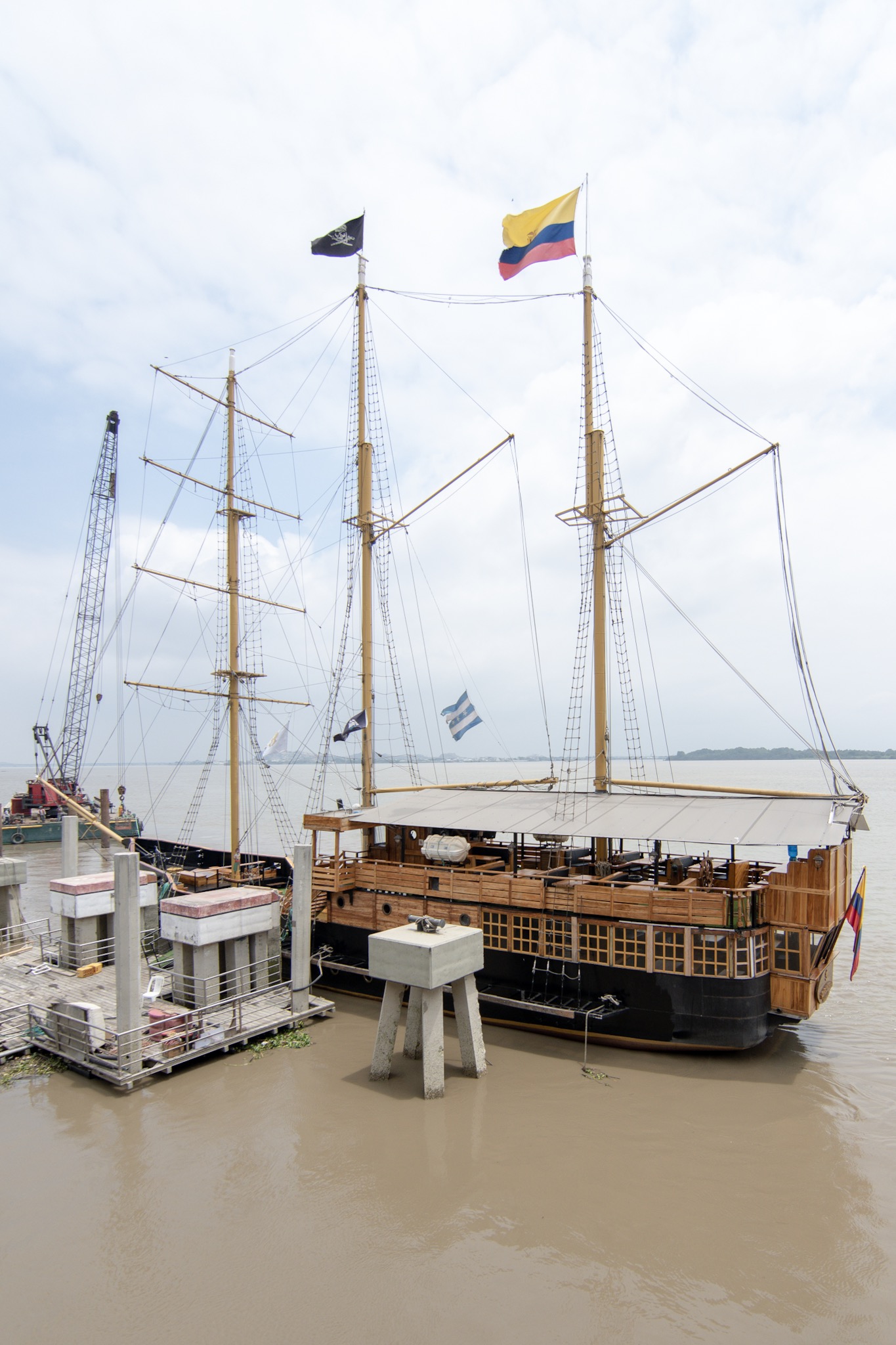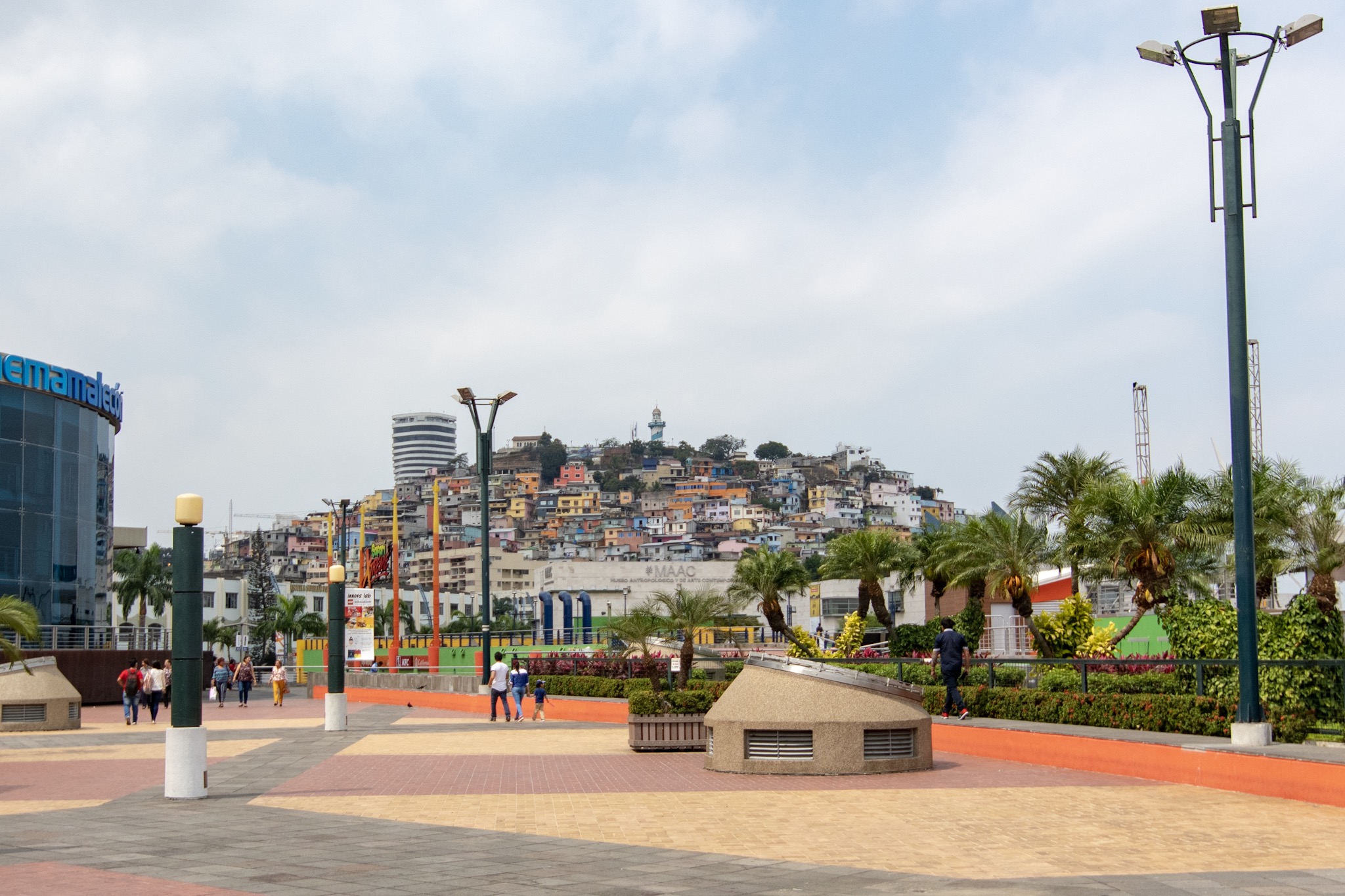Wanderbus (Part 2 - Cuenca, Cajas, Guayaquil)
Cuenca ist eine alte Kolonialstadt und gehört ebenfalls zum UNESCO Weltkulturerbe wie die Innenstadt von Quito. In der drittgrössten Stadt Ecuadors spricht man den “süssesten” Dialekt und die Bevölkerung sieht schon eher westlicher aus. Es Leben viele Expats aus Nordamerika in Cuenca was immer wieder stark betont wurde, wieso auch immer? Wenn man die Stadt so ansieht versteht man aber sehr schnell weshalb. Klein, übersichtlich, hübsch und sicher, aber dennoch bezahlbar.
Cuenca is an old colonial city that also belongs to the Unesco world heritage like the old town of Quito. In the third biggest city they speak the “cutest” dialect and the people themself look much more like western people. There are a lot of expats from North America living in Cuenca, a fact that was repeatedly and proudly mentioned. How come? If you observe the city it becomes quite clear: it’s small, nice and safe and still affordable.
Zusammen mit Stephanie, die wir auf unserer Bustour kennen gelernt haben, erkundeten wir die Stadt mit einem semi Hop-On Hop-Off-Bus. Der Bus fährt vom Zentrum (Parque Calderon) nach Turi, einer Kirche auf einem Hügel mit tollem Ausblick auf die Stadt. Da oben gabs das beste Sandwich ever! Nach der Rundfahrt entschlossen wir uns in das Pumapungo Museum zu gehen. Das Museum ist gratis und enthält viele Infos und Artefakte zu den einzelnen ethnischen Kulturen Ecuadors. Dazu gehört ein riesiger Aussenbereich mit Inka bzw. Kañari Ruinen eines Wiraqucha-Tempels. Daneben grasen Lamas und weiter hinten in einer eher kleinen Voliere leben einheimische Vögel.
Together with Stephanie, who we met on the Wanderbus, we explored the city with a kind of Hop-On Hop-Off-Bus. It starts at the city centre (Calderon Park) and goes to Turi, a church on a hilltop, where you have a nice view over the whole city. There was a nice restaurant that made the best sandwiches ever! After the ride back we decided to go to the Pumapungo Museum. Surprisinglz the entry was free. The museum had a lot of information and artifacts of the different ethnic cultures of Ecuador. Additionally there’s a huge outdoor area with ruins of the Wiraqucha temple of the Inca and Kañari tribes. Next to the ruins is a garden with many different plants and lamas and further back is a small aviary with native birds.
Day 2 - Old Town, Cathedral and Panama Hats?
Am nächsten Tag gings auf eine Panorama Tour. Als der Bus bei einem
Panamahut Museum/Fabrik hielt und wir eine Führung bekamen, waren wir etwas
verwirrt aber da es gratis war, wieso auch nicht. Es stellte sich heraus, dass
der Panamahut ecuadorianischen Ursprungs
ist. Er hat seinen Namen von den vielen Arbeitern und Goldsuchern, die am
Panamakanal dringend einen Hut brauchten. Manuel Alfaro, ein gewiefter
Geschäftsmann, verkaufte ihnen diese Hüte. Und so wurde der Hut schnell als
Panamahut bekannt.
On the second day we did the next panoramic tour, this time the north
part of the city. When the bus stopped at a Panama hat museum/factory we were
surprised, but we got a nice free tour so it was ok. We learned that the Panama
hat has its roots in Ecuador. It got his name from all the workers and gold
seekers at the Panama Canal that urgently needed hats. Manuel Alfaro, a crafty
businessman, sold them the hats. And that’s why the hats from Ecuador became
known as Panama hats.
In dieser Fabrik wird jeder Hut in Handarbeit gefertigt, pro Tag werden etwa 300 Hüte fertiggestellt. Die Blätter für die Hüte werden zuerst gekocht und dann getrocknet. Gewoben, wieder in Wasser eingelegt, dann in Formen gepresst und veredelt. Je nach Qualität und feingliedrigkeit des gewobenen Hutes kann dieser von 30-2000$ kosten. Die Arbeit an einem solchen edlen Hut kann schnell einmal einige Monate dauern.
Danach besuchten wir noch die neue sowie die alte Kathedrale und flanierten durch die hübsche Altstadt. Ganz Cuenca hat sage und schreibe 52 Kirchen! Am späteren Nachmittag gönnten wir uns wieder mal ein Bad in einer nahegelegen heissen Quelle.
In the factory every hat is handmade. Per day around 300 hats are produced. The plants for the hats are first cooked and dryed, than woven and again kept under water. Afterwards they are pressed in the desired form and refined. Depending on the quality the hats are sold for 30-2000$. The work on a hat takes months.
After the tour we visited the new and the old cathedral and walked around the city, after lunch we took a bath at a hot spring.
Day 3 - From Cuenca to Cajas and Guayaquil
Am nächsten Morgen ging unsere Reise mit dem Wanderbus weiter. Hayde unsere Tourguidin holte uns bei der Kathedrale ab. Mario, unser Fahrer, navigierte uns geschickt zum Cajas Nationalpark. Der Park ist eine riesige Moor- und Seenlandschaft. Durch die Höhe von 3100-4450m.Ü.M. hat sich die Flora und Fauna angepasst. Die Blumen und Gräser wachsen sehr dicht und sammeln durch ihre trichterform das Wasser auf. Beim Gehen auf den “Wiesen” fühlt man sich wie auf einer Gymnastikmatte.
Im Park gibt es viele ausgedehnte Wandertouen, einige davon mehrtaegig. Zelten ist an ausgewiesenen Plaetzen erlaubt. Auf dem Rückweg zum Bus flog Rado noch ein dort ansässiger grosser Kolibri vor die Linse! Bei Vogelbeobachtern ist der Cajas Nationalpark sehr beliebt.
On the next morning our journey with the Wanderbus continued. Our guide Hayde picked us up at the cathedral and our driver Mario navigated us to swiftly the Cajas National Park. The park consists of extended moorlands and lakes on an altitude between 3100 and 4450m. The flora and fauna has adjusted to the harsh conditions. The flowers and grasses grow really close to each other and take a lot of water in because of their funnel-formed shape. Walking on the grasslands feels like walking on a yoga mat.
There are many treks for hiking, for some of them you need more than one day. Camping is allowed in designated spots the park. We did only a short walk to one of the nearby lakes. On the way back to the bus we were lucky to see a colibri. The Cajas National Park is popular with birdwatchers.
Nahe Guayaquil hielten wir bei einer Kakao und Mango Farm. Dort wurde uns dann erklärt wie man die Kakaobohnen züchtet und verarbeitet. Die Blüten eines Kakao Baumes sind winzig klein, die Befruchtung übernimmt eine Ameise. Die Chance, dass daraus dann auch wirklich eine Frucht wächst, ist sehr klein. Grundsätzlich gibt es mehrere Kakaosorten, die gelblichen eher kleineren und die grossen eher roten. Die ersten sind die hochwertigen Bohnen und letzteres die sogenannte Industriebohne, von denen es massenhaft gibt.
Close to Guayaquil we stopped at a Cacao and Mango Farm. They explained to us how they grow and process it. The flowers of a Cacao three are tiny, ants are in charge to fertilize it. However the chances that there will be a fruit are slim. There are two different sorts that they grow: yellowish, smaller ones and bigger reddish ones. First is the high quality fruit and second is the industrial lower quality cacao of which they have plenty.
Später durften wir unsere eigenen Bohnen rösten und mahlen. Nach dem Mahlen wurde es zusammen mit Zimt, Wasser, Milch und Zucker zu einem süssen Getränk zusammen gebraut. Rado hatte seine Freude. Don Stalin, der Besitzer des Guts begrüsste uns und gab uns eine kurze Pflanzenkunde. Die stachelige kugelförmige Pflanze wurde früher getrocknet zum Bürsten von Lamas verwendet, so gewann man ihre Haare und konnte sie weiterverarbeiten. Mit der Achiote (wird zum rot färben benutzt) wurden wir gekreuzigt, um böse Geister abzuwehren, wieso auch nicht :)
Am Nachmittag trafen wir in Guayaquil ein, die grösste Stadt Ecuadors.
Wir möchten Wanderbus und seiner Crew danken für diesen tollen Trip. Wir konnen euch nur weiterempfehlen!
Later we were able to roast and grind our own beans. After the grinding we added cinnamon, water, milk and sugar to get a sweet drink. Rado was very happy. Don Stalin, the owner of the farm greeted us and gave us a short plant overview. The spiky, round plant was used when dry to comb lamas for their fur. The Achiote is mainly used for coloring. We got a cross on our forehead to ward of evil spirits, why not :)
In the afternoon we arrived in Guayaquil our End destination.
We want to thank Wanderbus and their Crew for a wonderful experience, we can only recommend it!
Last Days in Guayaquil
Über Guayaquil gibt es dann auch nicht viel mehr zu sagen, als es ist eine Grossstadt, und grosse Städte sind nicht so unser. Am Tag darauf machten wir uns auf einige Touristenattraktionen zu begutachten. Der historische Park mit den Schildkröten und Iguanas war irgendwie sureal. Gefühlte 20'000 Tauben tummelten sich ebenfalls dort und nahmen keine Rücksicht auf was auch immer. Sie standen auf Iguanas, Schildkröten und assen ihr Essen. Der Anblick war dann auch sehr lustig wenn eine Taube sich auf einen rutschigen Schildkrötenpanzer niederlies. Achtung Rutschgefahr :)
There is not much to say about Guayaquil, it’s the biggest city of Ecuador, and we are not very fond of big cities. On the next day we headed for some of the tourist hotspots. The historical Park with turtles and Iguanas was somehow surreal. Perceived 20’000 pigeons were all over the place. They stood on Iguanas, turtles and ate their food. It was quite a funny sight whenever a pigeon tried to stand on a slippery turtle back! Serves them right.
An der Meerpromenade Malecón 2000 entlang sahen wir am Nordende das alte Viertel las Peñas. Danach hiess es Koffer packen und vorbereiten für Galapagos, wuhuuuu!!!
We walked along the boardwalk of the Malecón 2000, heading to the north where you can see the old town las Peñas. After that we had to pack our bags for Galapagos, wuhuuuu!!!
